#modal cloth material
Explore tagged Tumblr posts
Text
How Sri Sakthi Textiles Became the Top Choice for Cotton Fabric in Erode?

In the bustling textile hub of Erode, there’s a place where quality meets tradition Sri Sakthi Textiles. Decades ago, this family-run business began with a single mission: to craft the finest cotton fabric for people across India and beyond. Word spread quickly as Sri Sakthi Textiles earned a reputation for quality and reliability, becoming the go-to source for cotton fabric in Erode.
As the business grew, so did their collection. The team introduced modal fabric, a soft and sustainable choice that quickly became a favorite among fashion designers looking for that unique blend of comfort and elegance. Soon after, they added linen fabric, perfect for those seeking a breathable, natural look that’s as stylish as it is timeless.
Each roll of fabric tells a story of craftsmanship and care, woven with the dedication that Sri Sakthi Textiles has stood by for generations. Today, designers, artisans, and businesses from all over trust Sri Sakthi Textiles to provide the very best. They know that every fabric—from cotton and modal to linen—is crafted with love and a commitment to excellence, making it an ideal choice for anyone looking to bring their creations to life with a touch of authenticity.
#cotton fabric#modal fabric#linen fabric#viscose fabric#rayon fabric#cotton blend fabric#cotton fabric material#cotton blend#cotton cloth material#poly fabric#cotton shirting#cotton fabric cotton fabric#cotton and fabric#modal cloth#rayon cloth material#cotton fabric cotton#fabric and cotton#cotton cloth fabric#fabric cloth cotton#fabric cotton material#twill cloth#cotton blend cloth#blending of cotton#kinds of fabric cloth#cotton and cotton blend#varieties of fabric#modal cloth material#modal in fabric#modal material fabric#rayon material fabric
0 notes
Text
Personal Aesthetic -
Through Venus, Moon, Ascendant, Dominant Elements/Modalities

here's a general overview of how your personal aesthetic might be influenced by your Venus sign & house placement. Remember that everyone's preferences and expressions can vary widely, & these descriptions are meant to offer a starting point for exploration. You can go through each section to refer to and create your own harmonious understanding of each nuiance. Each theme will be representative of different aspects of yourself: Venus Sign: This sign represents your artistic tastes, fashion sense, and overall aesthetic preferences.

Venus Signs:
Venus in Aries: Edgy and bold, loves vibrant colors and dynamic styles. Enjoys athletic wear and fashion-forward looks.
Venus in Taurus: Classic and earthy, values comfort and quality. Prefers natural fabrics, earth tones, and timeless pieces.
Venus in Gemini: Eclectic and versatile, enjoys mixing and matching styles. Has a love for trendy accessories and playful colors.
Venus in Cancer: Nostalgic and cozy, prefers soft and comfortable fabrics. May lean towards vintage-inspired or homey aesthetics.
Venus in Leo: Glamorous and attention-grabbing, enjoys statement pieces and bold colors. Loves luxurious materials and dramatic flair.
Venus in Virgo: Neat and refined, appreciates clean lines and practical elegance. Prefers well-organized and polished looks.
Venus in Libra: Harmonious and stylish, values balance and symmetry. Has a penchant for fashion-forward trends and elegant pieces.
Venus in Scorpio: Mysterious and sensual, loves deep and rich colors. Prefers outfits that evoke intensity and allure.
Venus in Sagittarius: Adventurous and eclectic, embraces a global and bohemian aesthetic. Enjoys travel-inspired pieces and bold patterns.
Venus in Capricorn: Timeless and sophisticated, appreciates classic and professional styles. Values high-quality pieces and understated elegance.
Venus in Aquarius: Unique and avant-garde, embraces quirky and unconventional fashion. Enjoys experimental and futuristic looks.
Venus in Pisces: Dreamy and romantic, prefers soft and flowing fabrics. Loves ethereal and fantasy-inspired aesthetics.
Venus House: The house that Venus is located in your natal chart can provide insights into the areas of life where you express your aesthetic preferences.
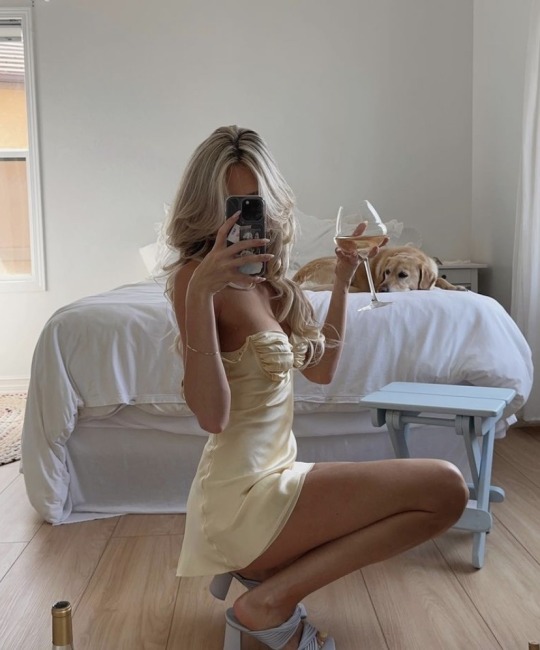
Venus Houses:
Venus in the 1st House: Personal and attention-grabbing, leans towards a style that showcases individuality and uniqueness.
Venus in the 2nd House: Sensual and luxurious, values quality materials and comfortable yet stylish clothing.
Venus in the 3rd House: Versatile and communicative, enjoys styles that express curiosity and intellectual engagement.
Venus in the 4th House: Nostalgic and cozy, prefers styles that evoke a sense of home and emotional comfort.
Venus in the 5th House: Playful and creative, embraces trends and enjoys fashion as a form of self-expression.
Venus in the 6th House: Practical and polished, prefers clean and organized styles that suit daily routines.
Venus in the 7th House: Harmonious and refined, values balanced and aesthetically pleasing looks.
Venus in the 8th House: Intense and provocative, gravitates towards styles that evoke mystery and allure.
Venus in the 9th House: Adventurous and global, embraces a diverse range of styles and cultural influences.
Venus in the 10th House: Professional and sophisticated, prefers classic and elegant styles suitable for public appearances.
Venus in the 11th House: Eccentric and unique, enjoys fashion that sets them apart and showcases individuality.
Venus in the 12th House: Dreamy and ethereal, prefers styles that evoke a sense of fantasy and spiritual connection.
Moon Sign: Your Moon sign reflects your emotional and inner world, which can also play a role in your aesthetic choices.
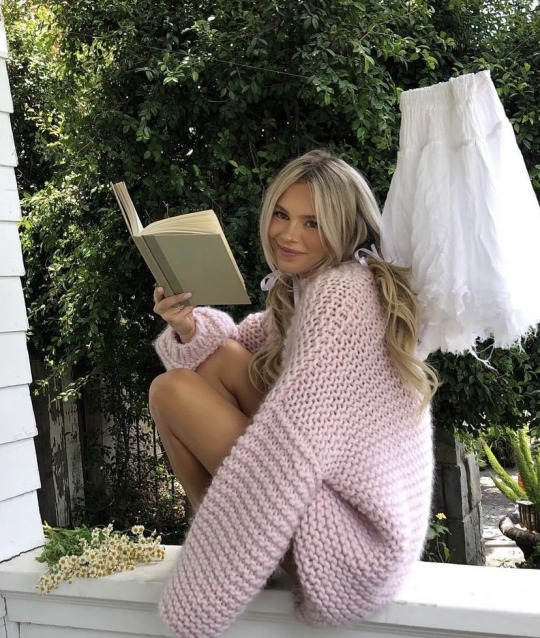
Moon Sign:
Moon in Aries: Bold and dynamic aesthetic, drawn to vibrant colors and edgy styles. Enjoys statement pieces and adventurous looks.
Moon in Taurus: Earthy and comfortable aesthetic, values quality fabrics and timeless pieces. Prefers classic and well-fitting styles.
Moon in Gemini: Eclectic and versatile aesthetic, enjoys mixing and matching styles. Loves playful colors and accessories.
Moon in Cancer: Cozy and nostalgic aesthetic, prefers soft and comforting fabrics. Enjoys vintage-inspired and homey styles.
Moon in Leo: Glamorous and attention-grabbing aesthetic, loves bold colors and luxurious materials. Prefers dramatic and eye-catching pieces.
Moon in Virgo: Neat and polished aesthetic, appreciates clean lines and practical elegance. Prefers well-organized and refined styles.
Moon in Libra: Harmonious and refined aesthetic, values balance and symmetry. Enjoys fashion-forward trends and elegant pieces.
Moon in Scorpio: Intense and provocative aesthetic, drawn to deep and rich colors. Prefers styles that evoke mystery and allure.
Moon in Sagittarius: Adventurous and global aesthetic, embraces a diverse range of styles. Enjoys travel-inspired pieces and cultural influences.
Moon in Capricorn: Professional and sophisticated aesthetic, appreciates classic and timeless styles. Values high-quality and understated pieces.
Moon in Aquarius: Unique and unconventional aesthetic, enjoys styles that set them apart. Enjoys experimental and futuristic looks.
Moon in Pisces: Dreamy and romantic aesthetic, prefers soft and flowing fabrics. Loves ethereal and fantasy-inspired styles.
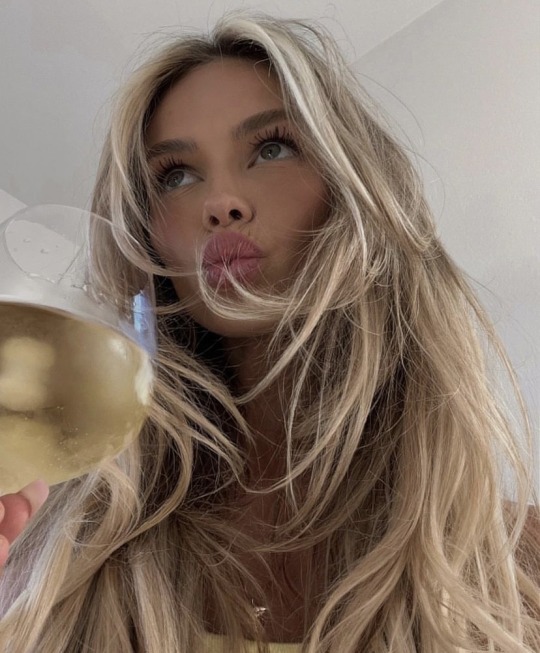
Moon Houses:
Moon in the 1st House: A personal and bold aesthetic that reflects your individuality and presence. Your style makes a statement about who you are.
Moon in the 2nd House: Aesthetic preferences are influenced by comfort and quality. You appreciate well-made and tactile pieces.
Moon in the 3rd House: Aesthetic preferences are influenced by intellectual engagement and curiosity. You enjoy versatile and communicative styles.
Moon in the 4th House: Nostalgic and homey aesthetic, reflecting emotional comfort and a sense of familiarity.
Moon in the 5th House: Playful and creative aesthetic, embracing fashion as a form of self-expression. Loves to experiment with different looks.
Moon in the 6th House: Aesthetic preferences are influenced by practicality and efficiency. You appreciate polished and well-put-together styles.
Moon in the 7th House: Aesthetic preferences are influenced by partnerships and harmony. You seek styles that reflect balance and aesthetic cooperation.
Moon in the 8th House: Aesthetic preferences are influenced by intensity and depth. You're drawn to styles that evoke mystery and transformation.
Moon in the 9th House: Aesthetic preferences are influenced by adventure and exploration. You enjoy styles that embrace cultural diversity and global influences.
Moon in the 10th House: Aesthetic preferences are influenced by professionalism and reputation. You gravitate toward classic and sophisticated styles.
Moon in the 11th House: Unique and avant-garde aesthetic, reflecting your individuality and preference for unconventionality.
Moon in the 12th House: Aesthetic preferences are influenced by spirituality and dreaminess. You're drawn to styles that evoke a sense of fantasy and imagination.
Ascendant Sign: This is more about your outward appearance, it can also influence your aesthetic choices. Your Ascendant sign may guide you toward certain fashion trends or styles that align with your projected image.

Ascendant:
Aries Ascendant: Expresses their aesthetic through bold and energetic styles. They might opt for edgy looks, sporty attire, and vibrant colors to reflect their confident and adventurous personality.
Taurus Ascendant: Expresses their aesthetic through comfort and elegance. They tend to gravitate towards high-quality materials, classic silhouettes, and earthy tones that showcase their love for luxury.
Gemini Ascendant: Expresses their aesthetic through versatility and trends. They're likely to experiment with various styles, mixing and matching clothing items, and staying up-to-date with the latest fashion trends.
Cancer Ascendant: Expresses their aesthetic through a cozy and nurturing approach. They might prefer soft and flowing fabrics, pastel colors, and styles that evoke a sense of emotional connection.
Leo Ascendant: Expresses their aesthetic with a touch of drama and glamour. They enjoy attention-grabbing clothing, bold accessories, and styles that allow them to shine and be the center of attention.
Virgo Ascendant: Expresses their aesthetic through refined and polished looks. They tend to choose clean lines, well-tailored clothing, and subtle details that showcase their attention to detail.
Libra Ascendant: Expresses their aesthetic through balance and harmony. They often opt for elegant and tasteful clothing, and they pay attention to color coordination and creating a visually pleasing appearance.
Scorpio Ascendant: Expresses their aesthetic with intensity and allure. They might gravitate towards bold and provocative styles, dark colors, and clothing that exudes a sense of mystery.
Sagittarius Ascendant: Expresses their aesthetic through a free-spirited and adventurous approach. They're drawn to eclectic and global styles, embracing a mix of cultural influences and bold patterns.
Capricorn Ascendant: Expresses their aesthetic through timeless and sophisticated choices. They prefer classic, well-structured clothing that reflects their professionalism and status-conscious nature.
Aquarius Ascendant: Expresses their aesthetic with an avant-garde and unique flair. They might gravitate towards unconventional clothing, quirky accessories, and styles that challenge traditional norms.
Pisces Ascendant: Expresses their aesthetic through dreamy and romantic looks. They prefer soft and flowing fabrics, ethereal colors, and styles that evoke a sense of fantasy and imagination.
Dominant Elements + Modalities: Assess the dominant elements (fire, earth, air, water) and modalities (cardinal, fixed, mutable) in your natal chart. These can give you a general sense of the energies that resonate with you.
Elements:
Fire Signs (Aries, Leo, Sagittarius): People with a dominant Fire element in their chart often prefer bold and energetic aesthetics. They might lean towards vibrant colors, expressive patterns, and styles that showcase their confident and passionate nature.
Earth Signs (Taurus, Virgo, Capricorn): A strong Earth element indicates a preference for practical and grounded aesthetics. These individuals might gravitate towards classic and timeless styles, neutral tones, and comfortable yet stylish clothing.
Air Signs (Gemini, Libra, Aquarius): A dominant Air element suggests a preference for intellectual and communicative aesthetics. They might enjoy clean and well-organized styles, modern designs, and clothing that fosters freedom of movement.
Water Signs (Cancer, Scorpio, Pisces): A strong Water element points to a preference for emotional and intuitive aesthetics. These individuals might be drawn to soft and flowing fabrics, dreamy colors, and styles that evoke a sense of emotion and sensitivity.
Modalities:
There are three modalities in astrology: Cardinal, Fixed, and Mutable. Each modality reflects different approaches to initiating, stabilizing, and adapting energies, which can be mirrored in one's aesthetic choices:
Cardinal Signs (Aries, Cancer, Libra, Capricorn): A dominant Cardinal modality can lead to an aesthetic that's innovative and trendsetting. These individuals might embrace new styles and trends, showing a willingness to experiment and take the lead in fashion choices.
Fixed Signs (Taurus, Leo, Scorpio, Aquarius): A strong Fixed modality suggests an aesthetic that's stable and consistent. These individuals might lean towards classic pieces, enduring styles, and clothing that reflects their personal taste without necessarily following current trends.
Mutable Signs (Gemini, Virgo, Sagittarius, Pisces): A dominant Mutable modality can result in a versatile and adaptable aesthetic. These individuals might enjoy mixing and matching styles, experimenting with various looks, and being open to a wide range of fashion influences.
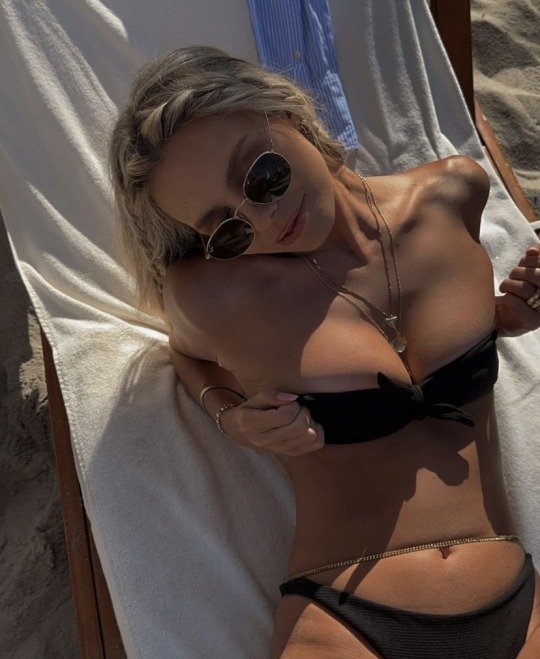
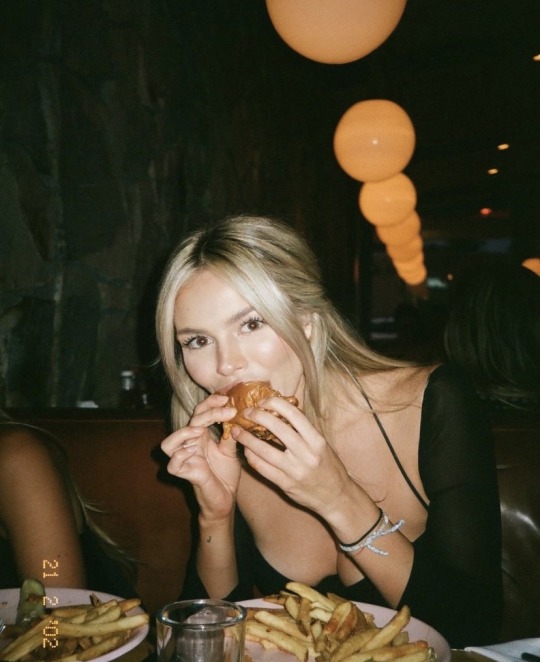
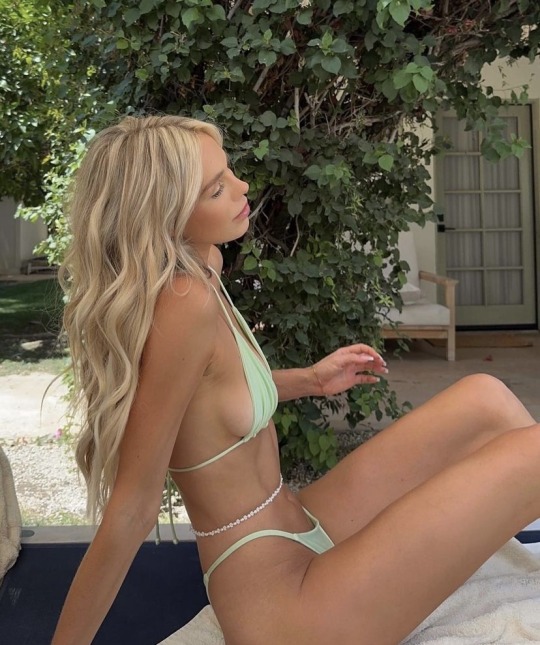

For a specified and honed in description for your personal aesthetic, drop your placements in the comments! A part 2 will be available explaining aspects and how your mood, resistance + insecurities, outer world may affect your ability to express your aesthetic
#astrology#zodiac#aesthetic#cottagecore#sirencore#astro notes#natal chart#Sagittarius#Leo#astro community#virgo#cancer rising#horoscope#scorpio#ascendant#rising sign#femme fatale#capricorn#pisces#dreamy
884 notes
·
View notes
Text
A Lesson on Sympathetic Magic
{My post is cross-posted from The Cobalt Athenaeum aka my original post. You can find the server at the bottom of my pinned post.}
Always take my words with a grain of salt and do your own cross-referencing and research on a subject. Never take my words at face value. Self-study is important.
What is Sympathetic Magic?
“Sympathetic magic, also known as imitative magic, is a type of magic based on imitation or correspondence." - Wikipedia
Another example is
“Sympathetic magic is a magical modality that involves symbolically imitating the desired outcome. It may involve acting on a physical representation of a target or creating a physical representation of the outcome or recreating the desired outcome through motion and art. In this way, the practitioner might cause change at a distance in time or space.” - magickalspot.com
Sympathetic Magic Broken Down
Sympathetic Magic might sound difficult but I promise it is not. Let’s have a bit of a history lesson. Sir James George Frasier first outlined the underlying principles of sympathetic magic in his (1890-1915) book The Golden Bough (Ch 3). He explained that it was based on two basic principles which we now call the Law of Similarity and the Law of Contagion or Contact. There was also a book written by Richard Andree called Sympathy-Enchantment which was written in 1882. The idea of some form of sympathetic magic has existed since prehistory.
There has been talk of Ancient Egyptians using sympathetic magic within their rituals, from use of charms and amulets. We can see examples of sympathetic magic in Kemetic practices, some history is never forgotten.
It goes like this:
Principle - Explanation: Examples
Law of Similarity - “Like produces like”: Uses of a poppet to create a direct link to a target for healing, baneful work and other means
Law of Contagion - Objects or beings/things in contact retain a connection: Using a taglock (hair, nails, body fluids) in a spell to influence the target or as a representation of yourself
Law of Correspondence - Symbolic associations create connections: using for example a pink candle for self-love or a black candle for protection or baneful work. This would follow colour magic for theory
Law of Association - Linking two entities establishes a connection: Placing a photo of an ancestor on an ancestor altar or using a photo as a Taglock for a spell
Sympathetic Magic is the correspondence itself within witchcraft practice. It’s the main driving point behind a spell that uses materials. Without mastering sympathetic magic, your spells may not work as intended and may not have the power behind them that you so wish. Even materials in magic sometimes need a taglock of sorts for a spell to be as effective.
Law of Similarity
The Law of Similarity states that things that resemble each other have a connection on a metaphysical level. Examples include a poppet being used to represent an individual, either yourself or someone else. Its similarity to the target. This is what would drive the spellwork, as it would influence the target as intended. This is the basics of the law, the very base of representations in spellwork.
The Law of Contagion or Contact
The Law of Contagion states that things that were once in contact remain connected after separation and that whatever affects one can still affect the other, and whatever energy was in the original remains in the removed. We see this in taglocks, taglocks that were once connected to a being, living or dead. This can be physical taglocks (hair, nails, body fluids) or even a business card this person once possessed or an item of clothing. Alternatively, if you were out of options a name and birthday or a photograph would work fine. In a pinch, you work with what you have.
Types of Sympathetic Magic
Similarity
That of which resembles something that represents or substitutes an object or thing to do with the working. We can look at alchemy in this sense, we would alchemize an ingredient as a substitute. Pomegranates have been seen as a substitute for blood as t’s connected with life/death, vitality and mortality/immortality. It shows this symbolism through myths throughout different cultures and some folklore (ex. vampires). You can thank our Maven Satan for this fun fact so I can look into it further.
Contact
That of which something came in contact with something that can represent an object, thing or person. Examples include taglocks (hair, nails bodily fluids) or even moon/sun water as its rays have “touched” the water, blessing it a certain way. It can be UPG, SPG or VPG.
Imitation
While being close to similarity, it's not quite the same. It involves the act of creating an imitation object. Things like Poppets are great examples of alchemizing an ingredient for a working. The important thing is that it looks like the thing/person you are creating, however, a close imitation works just as fine (alchemy). Correspondence Correspondences are essentially the idea that something can influence another thing because of its relationship or resemblances to said thing. Let's say for example a correspondence to a deity, Roses are seen as a correspondence to the goddess Aphrodite or Keys for Hekate. You can also have something like Peppermint that represents the planet Mercury, as it rules under such. Correspondences can look like colours, plants, minerals and objects. As long as it represents that thing you are working with, it is a correspondence.
Examples of Sympathetic Magic
Practice - Purpose: Example
Poppet Magic - Healing, cursing, influencing, or representing a person: Constructing a doll-like figure and using it as a focus point to a ritual
Mirror Magic - Reflection, divination, or reversing energy: Using mirrors to channel intentions, amplify energy, reflect energy or for scrying
Material Correspondences - Utilizing plants, minerals and colours for their symbolic associations: Selecting specific herbs or flowers from research for their correspondence to include in a spell or working
Charm or Talisman Creation - Protection, luck, or manifestation: Crafting a personal charm or talisman with an intended purpose like protection or invisibility
Sources
Sympathetic magic. (2024, August 25). In Wikipedia. https://en.wikipedia.org/wiki/Sympathetic_magic
https://magickalspot.com/sympathetic-magic/ (read this source with a grain of salt as it mentions things like voodoo dolls)
https://plentifulearth.com/sympathetic-magic-power-spells/ (again read this source with a grain of salt as it mentions voodoo dolls and other topics that are a bit of a yikes)
https://www.worldhistory.org/article/1019/magic-in-ancient-egypt/
Would you be interested in the rest of my posts? Check out the Masterpost.
#sympathetic magic#law of contact#law of contagion#law of similarity#witchcraft#witch#witchblr#paganism#the cobalt athenaeum#cobalt athenaeum
42 notes
·
View notes
Text
oh, to dress as your venus sign.ᐟ
[!] featuring my aries venus in the ninth house.
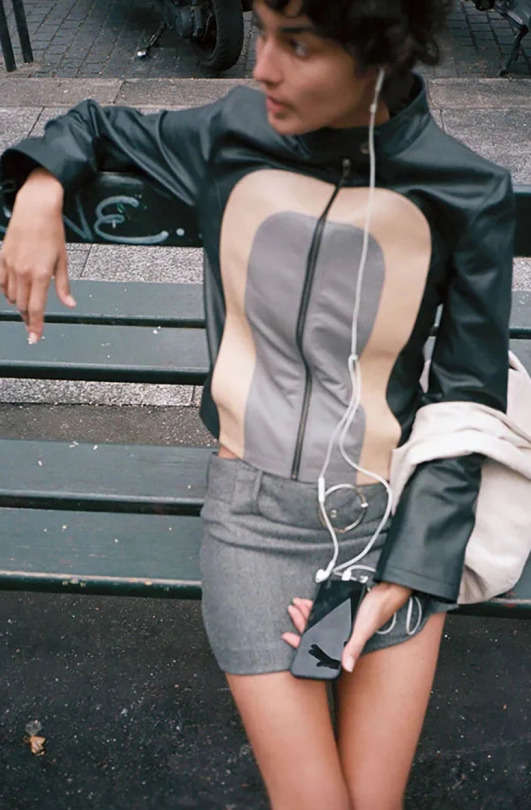


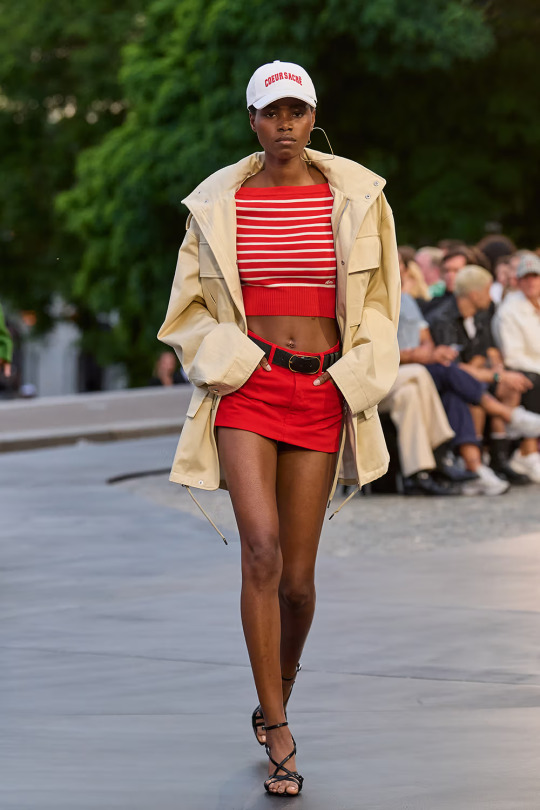
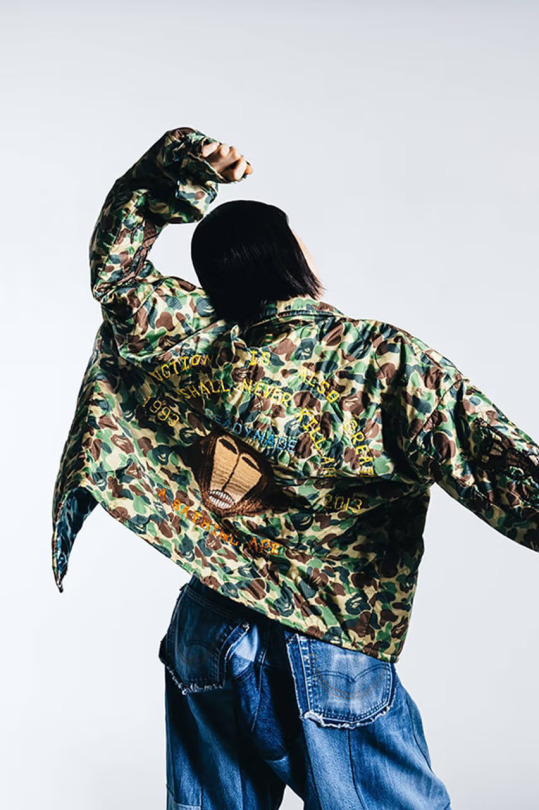
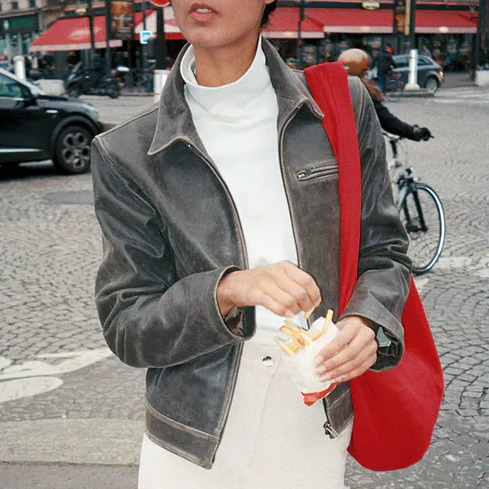



brief description: focusing on the more malefic side of mars in comparison to my previous post. in venus, aries is boyish and energetic— leaning heavily into bright reds to combat various shades of monochromatic blacks, whites, greys, and paler shades.
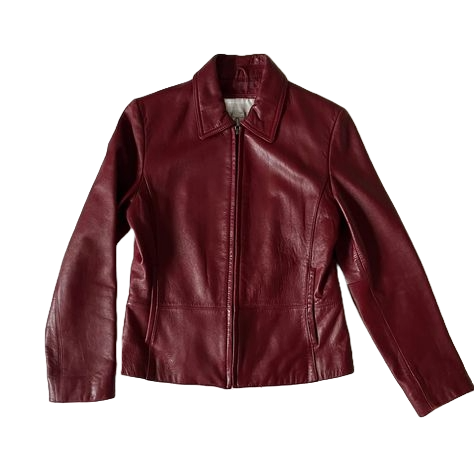
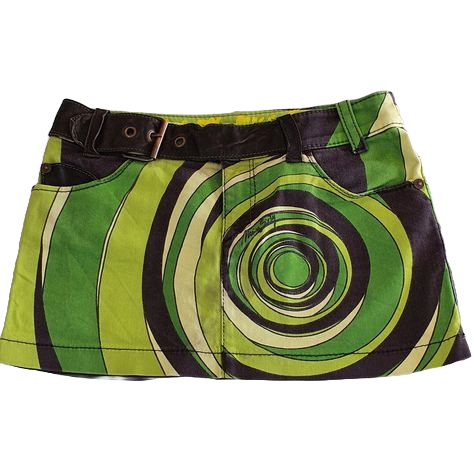
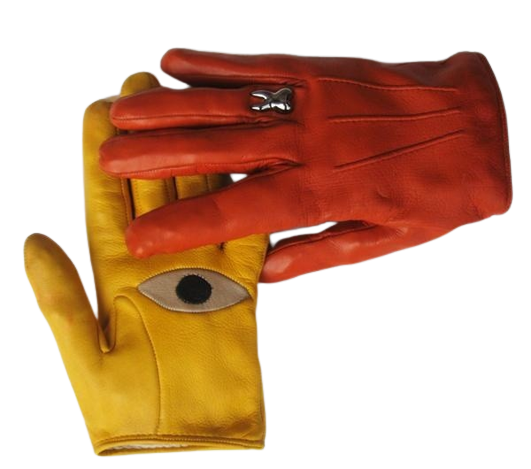
short hair, short cuts, and an even shorter temper.ᐟ
rather than the vibrant pinks and neons i've mentioned before, this venus in aries uses varying shades of red to cut through dark purples, greys, blacks, and army greens.
felt incredibly inspired by this picture from the musier paris spring 2023 lookbook— the use of grey leather on plain white with the model's very sleek pair of black boots made for such a carefully-monochromatic outfit that allowed for her red hobo bag to absolutely shine through. and the hair! just the perfect amount of short and playful that i associate with venus in this sign.
in this interpretation, venus in aries is a minimalist. yes, there may be a mix of revealing cuts and varying textures of leather and denim, but the colors always speak for themselves. sparkles, crazy patterns, belts, and excessive pieces of jewelry are to be kept at a minimum (but not forgone) in order for the singular addition of red to be the forever star of the show.
leather, cargo, and denim are truly the primary fabrics that bring body to each outfit for this sign— layered on top of cotton or modal to create emphasis for these more structured fabrics.
brands that come to mind: BAPE, maje paris, musier, AMI paris, zadig et voltaire, A.P.C, this piece from the isabel marant spring 2024 collection, jil sander, helmut lang.

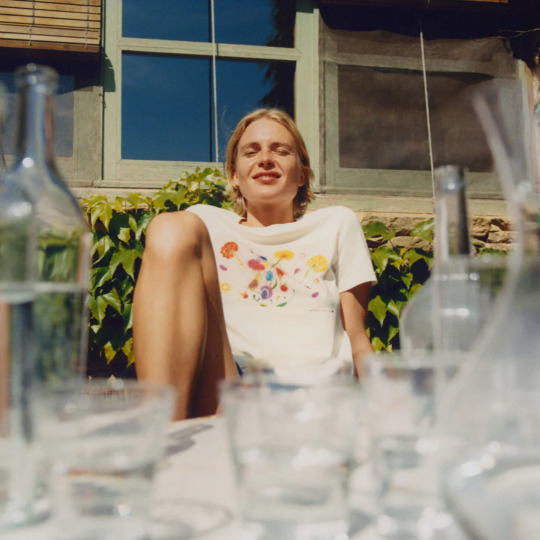
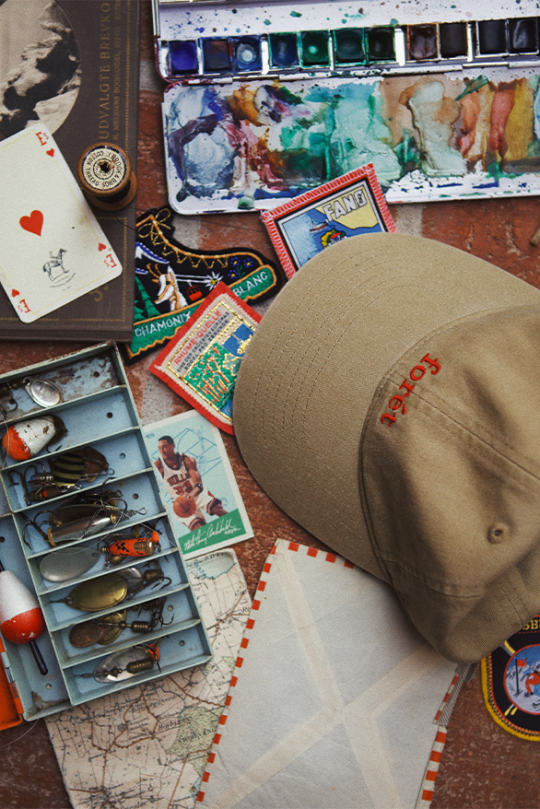
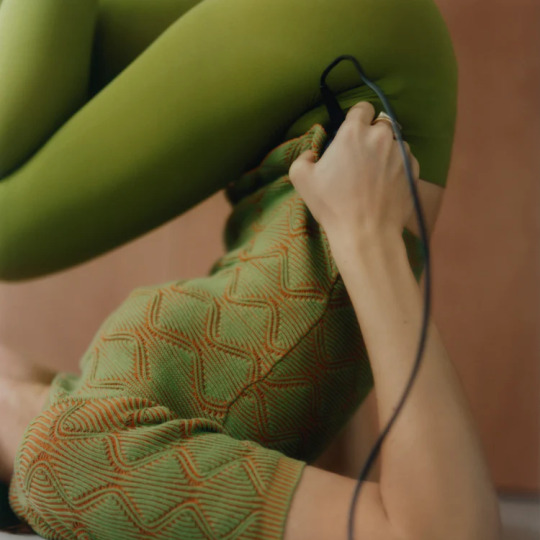

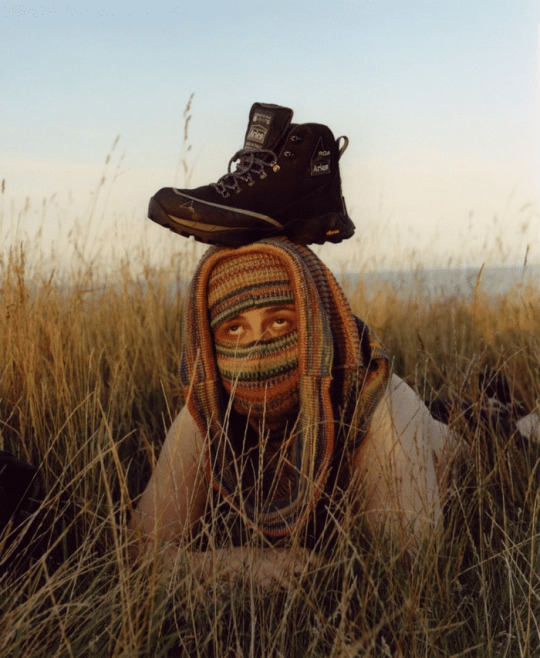
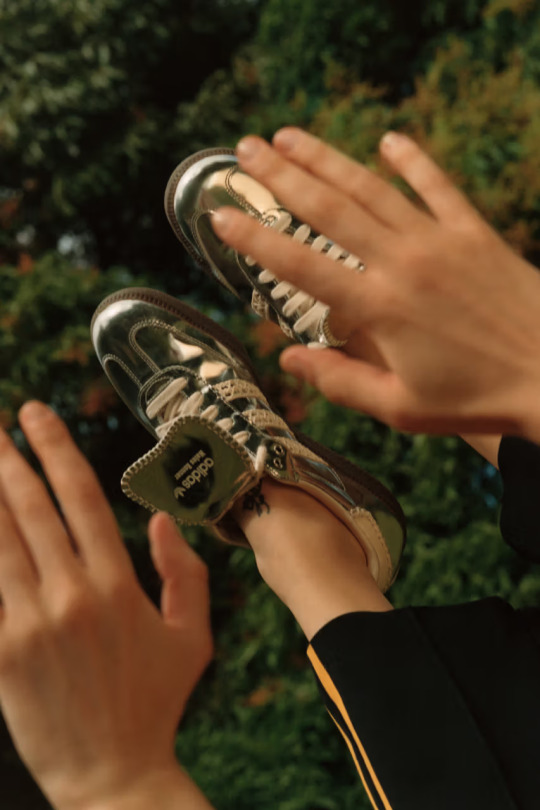


brief description: venus in the ninth house is big on travel and expanding their horizon by visiting unfamiliar places. in this house, venus seeks pieces of clothing that make moving easy and comfortable— preferably in muted blues, pinks, greens, and oranges but with a loud pop of red to show their bright, jupiterian spirit.
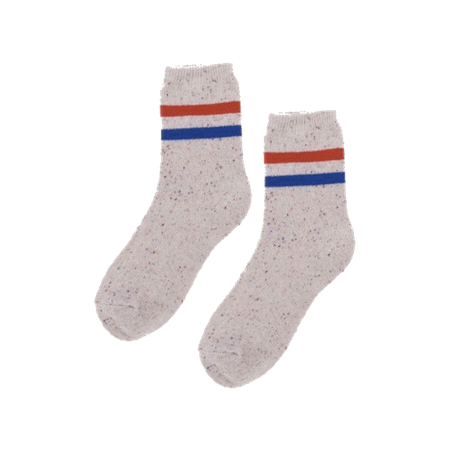
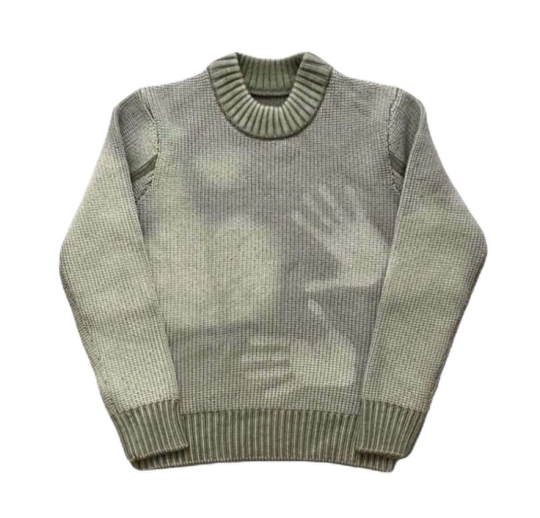

something to camp in, something outdoorsy, something easy to move in.ᐟ
the ninth house also represents ethics; making this sign highly attracted to fashion brands that make use of eco-friendly fabrics and materials. they have a soft spot for brands that put special effort into ensuring that they are operated in an ethical manner.
colorful knits and sturdy hiking boots as seen in this aries x ROA hiking collaboration! such a perfect blend of comforting knitwear and natural colors to support the rugged life of their dreams.
too keep up with this sign's active spirit, i also envisioned a more boyish and sporty wardrobe and felt particularly inspired by the most recent sporty & rich x adidas collaboration. cotton tees, jersey shorts, and bejeweled sambas that are best for movement and activity!
in terms of jewelry, a charmed anklet first comes to mind. this sign is also a minimalist to, so they would rather put their energy into accessorizing their shoes with charms, bags with trinkets, and beltlines with functional pouches.
more energy moves towards functionality in this sign; with multi-pocketed jackets and pants, compact crossbody bags, and shoes that can be paired with a multitude of outfits.
brands that come to mind: forét (fw24), adidas sambas, aries x ROA collab, thinking mu, AMI paris, sporty & rich, marni, pangaia, comptoir des cotonniers.
#alis does astrology#dressing like my sign/s#zodiac#zodiac signs#astrology#amateur astrology#aries venus#venus in the ninth house#astro observations#astrology observations
27 notes
·
View notes
Text
HUgE Dec 2013
LATEST NEWS REVIEW
NEXT Up
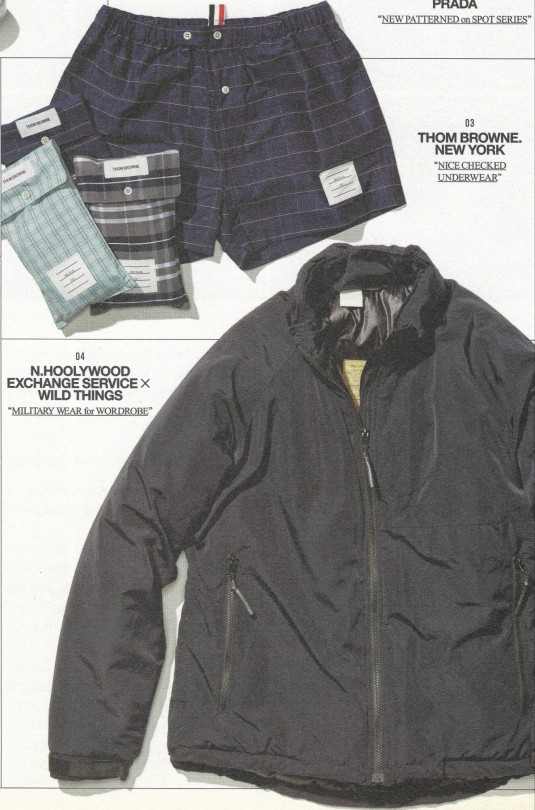
03
The long-awaited new underwear series from Thom Browne New York has been released. The lineup features the elegant check patterns that are characteristic of the brand. Made from the same broadcloth and oxford fabrics as the shirts that are the symbol of Thom Browne New York, the items are smooth and comfortable to wear. The sophisticated finish is highlighted by intricate details such as the waistband and buttoning. The items are sold in packaging with the same material and pattern, and are reasonably priced. Also recommended as a gift. ¥9,450 each (THOM BROWNE. NEW YORK AOYAMA)
04
A special item from N.HOOLYWOOD EXCHANGE SERVICE has arrived. It is a blouson jointly developed with WILD THINGS, a leading American climbing manufacturer. WILD THINGS TACTIC AL is a military line launched by WILD THINGS in 2010. The item is based on the classic "HAPPY JACKET" from the line, which also supplies clothing to the US military special forces. The silhouette has been modernized and the amount of Primaloft content has been reduced to achieve a more stylish look and comfortable fit. It has also been updated for town use with a seam pocket on the chest. ¥58,800 (Mister hollywood)
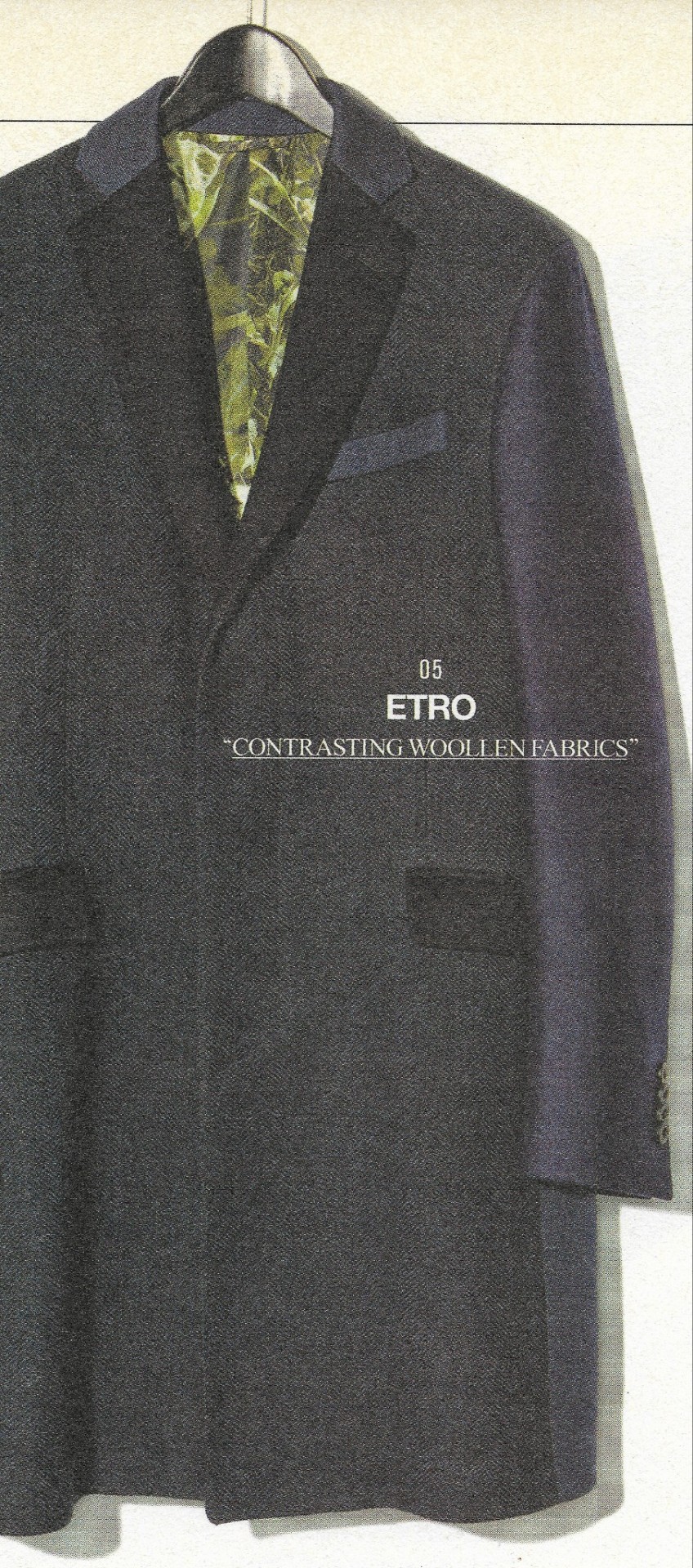
This fall, Etro has a wide selection of outerwear, including items made from a variety of materials such as leather, knitwear, and mouton. One item that stands out in particular is the tweed Chesterfield coat, which features a unique design with different fabrics used for the body, arms, lapels, and other parts. The silhouette is a moderately shaped regular fit, and the short length makes it very wearable. Also of note is the botanical print lining, which is a transfer of a photograph taken by creative director Kean Etro. ¥220,500 (ETRO JAPAN)
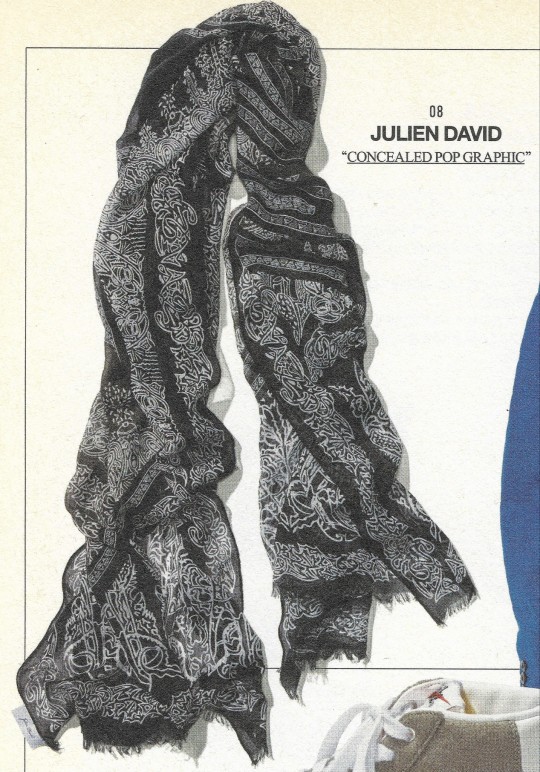
Just launched its flagship store in Harajuku, the new generation French-born, Tokyo-based brand Julien David is sure to keep your eyes peeled. Not only does the clothing range become more diverse with each passing season, but the signature item, the large scarf, is also steadily evolving. This season, the unique pattern depicts a "hand holding a pen" in a paisley pattern, which is very appealing. The contrast with the chic look when tied is fun. Made from cashmere and modal, the luxurious texture is also not to be missed. ¥31,500 (JULIEN DAVID JINGUMAE SHOP)

Bocco has collaborated with Uru to release the brand's first leather riders jacket. The style is based on Uru's no-collar style, with sleeve length and other sizing adjustments. The quilted liner and zipper are made of cupra material with a subdued sheen, deliberately using the reverse side, giving the jacket a unique Bocco approach. The cowhide has also been thinned by about 3mm compared to the previous model, making it more flexible and providing a smooth and light feel, almost like lamb leather. This high-quality jacket is a culmination of the commitment of both brands. ¥126,000 (GO inc.)
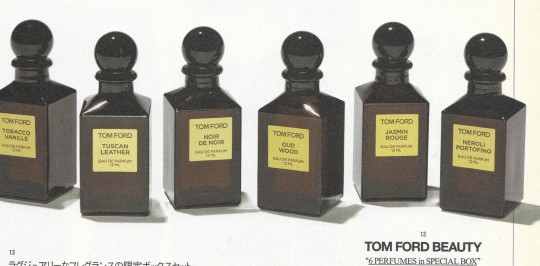
Luxury fragrance limited edition box set
Tom Ford has now moved his runway collections to London, making his movements even more eye-catching.
In addition to fashion, Tom Ford Beauty, which he also works on, has released a noteworthy fragrance set.
When Tom Ford started his own brand, the first thing he did was create fragrance, so his attention to detail is quite remarkable.
The Private Blend Collection is based on the concept of a "fragrance laboratory" and was created like free art, and has released a wide variety of fragrances to date.
"Neroli Portofino" is inspired by the cool breezes of Portofino in the Neroli region of Italy.
The lineup is truly unique and diverse, including "Tuscan Leather," which combines the animal scent of leather with ingredients such as jasmine for a smooth finish.
This set includes six particularly popular fragrances, including these two scents.
A special box containing a set of miniature bottles will be available for a limited time from October 25th.
All the scents are unisex, making them perfect for gifts. ¥40,425
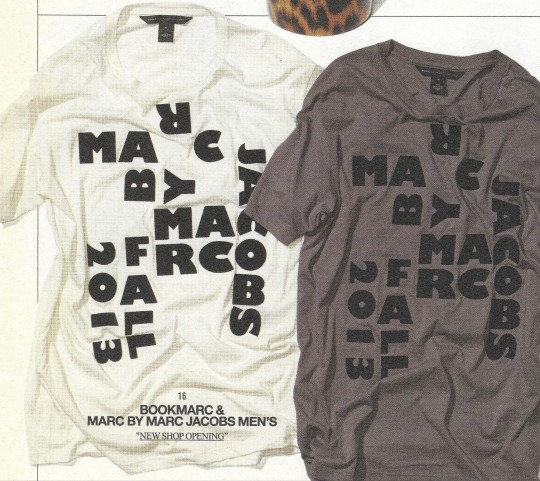
BOOK MARC, a New York bookstore run by Marc Jacobs, has opened its first Asian store in Harajuku. It will stock not only foreign books on art and culture, which are a source of inspiration for the designer, but also carefully selected Japanese books. There will also be a wide selection of original stationery, which has many fans around the world. The first basement floor of the store will also see the opening of Marc by Marc Jacobs' first men's shop in Japan. The full lineup of the men's collection will be available, including the limited edition T-shirt shown in the photo. This is a new hot spot in Harajuku that is sure to catch your attention. ¥15,750 each (MARC JACOBS CUSTOMER CENTER)
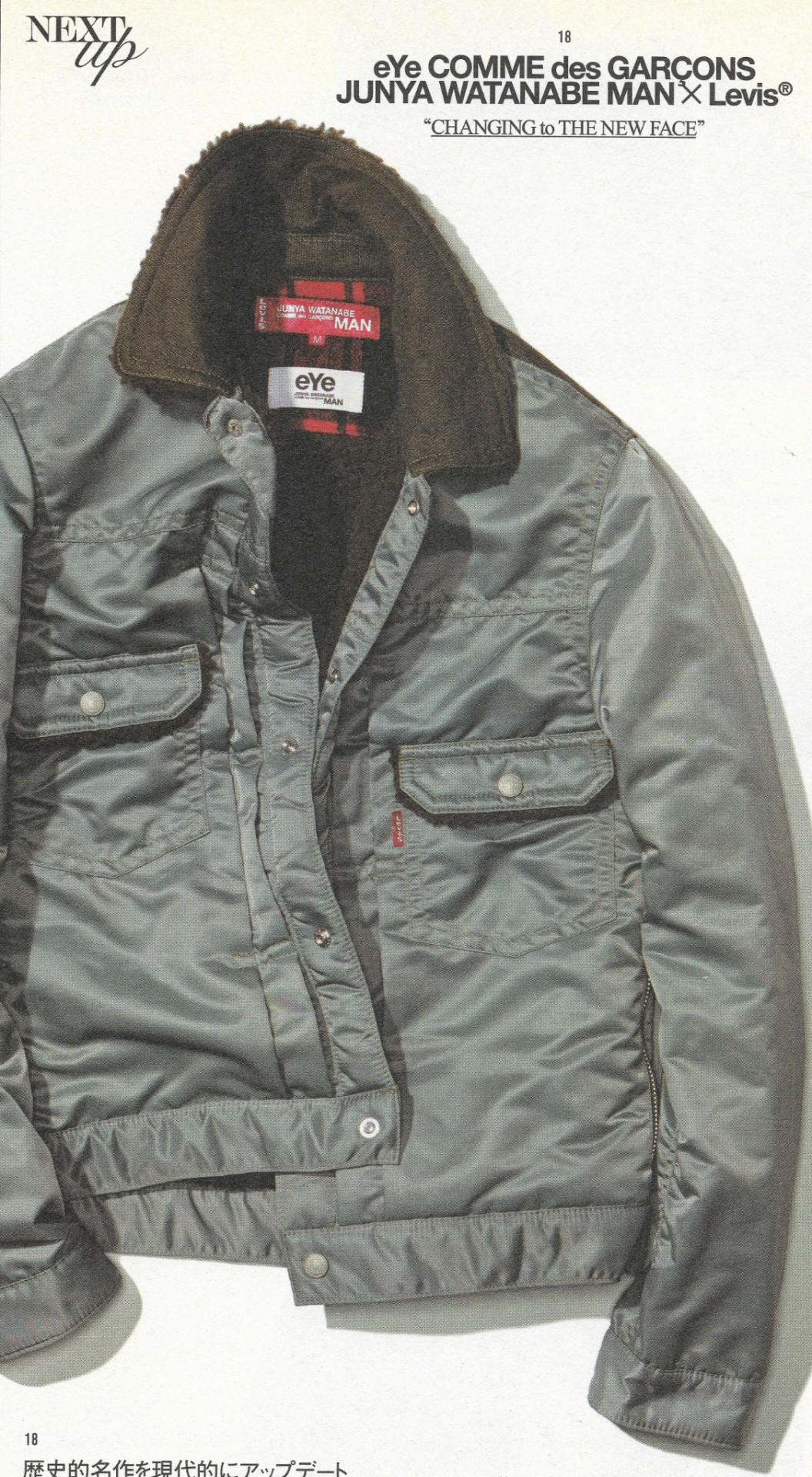
A modern update of a historical masterpiece
Since its founding in 2005, eYe Comme des Garcons Junya Watanabe Man has been releasing collaboration items with Levi's®.
The respect between the two brands continues unbroken, and this season is no exception. The long-awaited new model of blouson has arrived as a spot item. The base is the historical masterpiece that Levi's® released in 1962, the "507XX" denim jacket, commonly known as the second jacket.
The biggest feature is that the materials have been rearranged while the detailed design remains the same.
The body is made of nylon material, an original product of eYe Comme des Garcons Junya Watanabe Man.
In addition, the lining is lined with boa for comfort and warmth. The top collar and back yoke are made of OD color cotton, while the lining of the back yoke is switched to red and black buffalo check wool material, highlighting the contrast between the different materials, creating a subtle playfulness that is not to be missed. Designer Junya Watanabe's skillful use of materials,
Authentic items created by great predecessors have been given a modern and fresh look.
63,000 yen (COMME des GARÇONS)
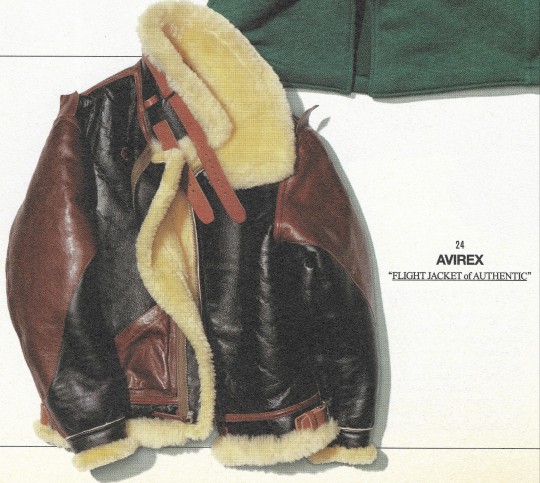
Introducing a new version of the "B-3" flight jacket, synonymous with Avirex. Based on an early vintage model, the design follows vintage details, such as combining a color palette of dark brown and different tones of brown, making it an appealing piece. The fleece, made from luxurious sheepskin from New Zealand, is not only highly insulating, but also comfortable to wear, with the length of the pile adjusted for each part. This authentic and voluminous flight jacket has an outstanding presence even on its own. ¥273,000 (AVIREX SHIBUYA)
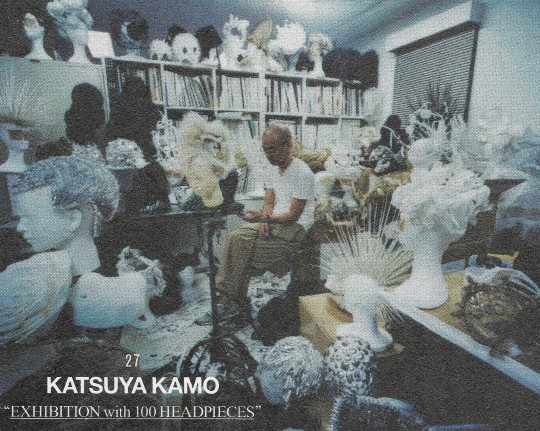
Katsuya Kamo is a world-renowned hair and makeup artist from Japan.
There will be fashion house collection shows, including Chanel haute couture,
She has appeared in campaign visuals for brands such as Kenzo, as well as in fashion magazines both in Japan and abroad.
A large-scale special exhibition will be held that will approach this world-famous creation from various angles.
More than 100 headpieces that he has created so far will be gathered together in one place.
The creative studio is also recreated within the venue.
There will also be a Polaroid book that reveals the creative process, as well as personal art objects.
[Kamo Katsuya's exhibition "100 HEADPIECES"]
TERM_11/2~11/18 PLACE_Laforet Museum Harajuku
URL_www.laforet.ne.jp
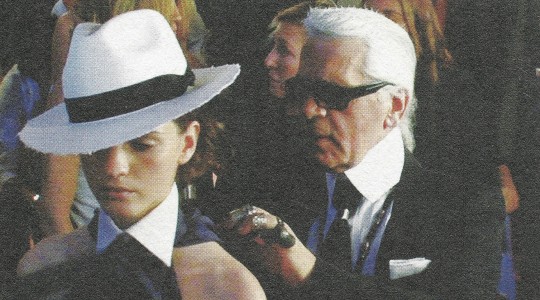
LAGERFELD CONFIDENTIAL
"DOCUMENTARY on THE MAN"
The release of Karl Lagerfeld's documentary film, "The Man Who Created Fashion: Karl Lagerfeld," has been confirmed. While there have been previous works that have looked behind the scenes at Chanel and Fendi collections, this one has involved Lagerfeld from the planning stages. By following him closely for over 200 hours over a two-year period, the film sheds more light on the designer's personality. The film also shows the backstage of shows, his design process, and even his home apartment. Through in-depth interviews, we get a glimpse into the true face, past, and philosophy of the fashion king.
[The man who creates fashion: Karl Lagerfeld]
TERM_11/16~ SCREEN_Cinemart Shinjuku, Human Trust Cinema Yurakucho and other theaters nationwide
URL_http://www.alcine-terran.com/lagerfeld
#my scans#fashion#2010s fashion#avantgarde#archive fashion#japanese fashion#junya watanabe#karl lagerfeld#chanel#avirex#marc jacobs#tom ford#thom browne
2 notes
·
View notes
Text
Shop Luxurious Lingerie and Sleepwear - Discover Secretland's Collection
If you are in need of some sweet pampering or you have to find a gift for someone you love, Secretland provides a stunning range of nightwear, lingerie sleepwear, and underwear. Currently a growing Canadian-based company from Vancouver, Secretland produces quality lingerie from such materials as silk and lace.
For the fitting and cute nightwear, check their collection of camis, babydolls, chemise and teddies. Pretty lace undergarments for her include underwire bras, panties, and bodysuits, which are perfect for bridal wear or wedding anniversary. If you enjoy the wonderful touch of silk on your body, you should definitely buy a silk kimono robe, negligee or pajamas.
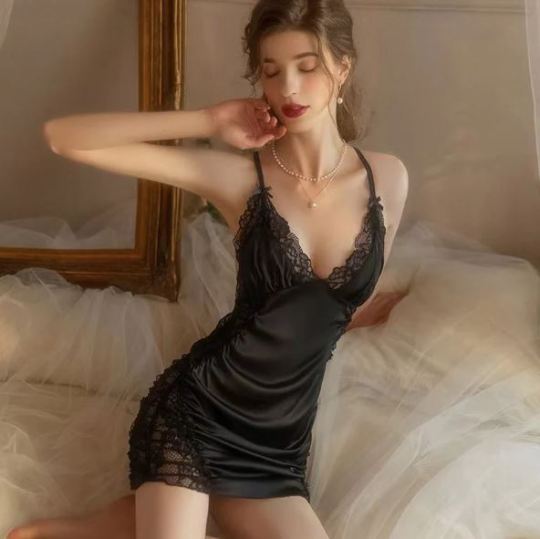
Lingerie Sleepwear
Secretland’s range of sleepwear is a span of from the warm fleece to the provocative satin. Wear a loose-fitting, smooth, and comfortable jersey knit nightgown or choose a short satin slip with lace edges if you want to feel seductive. Pajama suits in modal or cotton jersey makes can also be used as leisure wear since they are comfortable.
This is particularly important since every woman needs to have her daily undergarments in her lingerie drawer. That is why Secretland has a lot of options in terms of styles, cuts, and colors. Choose a package of seamless thongs, sexy underwear or hi-cut briefs in basic color. Or go for a burst of color with the latest range of bralettes, boyshorts, and bikinis that come in bright colours and cute prints.
Next time you are in need of new intimate apparel to purchase for yourself or a special lady in your life, do not hesitate to visit Secretland’s online store. They offer free shipping and returns, so you can browse their Canadian brand wearing your comfy clothes. Explore their collection online today and find comfy lingerie, nightwear, and basic undergarments made from exquisite materials. You will see elegant work ideal for bridal showers, honeymoons, anniversary gifts, Valentine’s Day and more. Time to treat yourself!
2 notes
·
View notes
Text
Loungewear: Your Guide to Ultimate Comfort
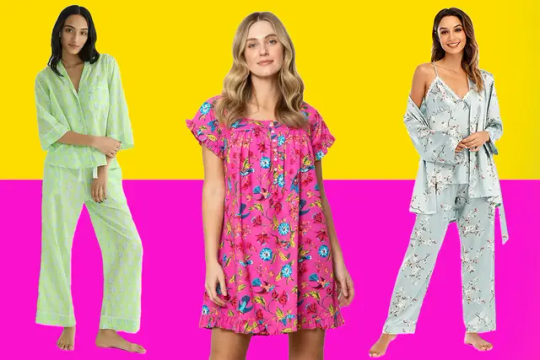
Loungewear is more than just clothes to wear around the house; it's a state of mind. It's that feeling of slipping into something soft, cozy, and utterly relaxing after a long day. Loungewear should be comfortable enough for napping, stylish enough for running errands, and versatile enough for unexpected guests. But with so many options available, choosing the right loungewear can be overwhelming. This blog post is your one-stop guide to different types of loungewear for men and women. We'll explore a variety of styles, materials, and brands to help you find the perfect pieces for your laid-back lifestyle.

For the Women: - The Classic Pajama Set: A timeless loungewear option, the pajama set offers comfort and style. Choose from soft cotton sets for ultimate comfort or silky satin sets for a touch of luxury. Opt for fun prints or classic stripes to express your personality. - The Cozy Robe: Wrap yourself in comfort with a luxuriously soft robe. Look for plush fleece robes for chilly days or lightweight cotton robes for warmer weather. - The Leggings and Tee Duo: A casual and comfy combination, leggings and tees are perfect for running errands, working from home, or lounging around. Choose from a variety of materials like cotton, jersey, or modal for the perfect level of comfort and breathability. - The Jogger Set: Joggers have become a loungewear staple for their effortless style and comfort. Pair them with a matching hoodie or a comfy tee for a laid-back look. - The Sweater Dress: A cozy and chic option, the sweater dress is perfect for lounging or running errands. Choose from chunky knits for extra warmth or lightweight knits for layering.

For the Men: - The Comfy Sweatsuit: A classic choice for men, the sweatsuit is perfect for relaxing at home or running errands. Opt for cotton or fleece sets for maximum comfort. - The Henley and Shorts Combo: A casual and summery option, the henley and shorts combo is perfect for lounging by the pool or running errands. Choose from a variety of fabrics and colors to express your style. - The Linen Pants and Tee Duo: A lightweight and breathable option, linen pants and tees are perfect for warmer weather. Linen is naturally wrinkle-resistant, making it a low-maintenance choice for lounging. - The Joggers and Hoodie Set: A comfortable and stylish option, joggers and hoodies are perfect for lounging or running errands. Choose from a variety of materials and colors to find the perfect set for you. - The T-Shirt and Shorts Duo: A classic and casual option, the t-shirt and shorts duo is perfect for lounging at home or running errands. Choose from a variety of fabrics and colors to express your style. Material Matters: The material of your loungewear is essential for both comfort and style. Here are some popular options to consider: - Cotton: Soft, breathable, and naturally hypoallergenic, cotton is a great choice for all-season loungewear. - Fleece: Ideal for colder weather, fleece is soft, warm, and cozy. - Modal: This silky-soft fabric is perfect for warmer weather and offers a luxurious feel. - Linen: Breathable and lightweight, linen is a great choice for summer loungewear. - Silk: Luxurious and elegant, silk is perfect for special occasions or a touch of indulgence. Brands to Love: When it comes to loungewear, there are endless brands to choose from. Here are a few of our favorites: - For Women: Eberjey, Ugg, Natori, Victoria's Secret PINK, Barefoot Dreams - For Men: Vuori, Reigning Champ, Patagonia, Champion, John Lewis & Partners Remember: When choosing loungewear, the most important thing is to find pieces that make you feel comfortable and confident. Don't be afraid to experiment with different styles clothing and materials until you find your perfect fit. Bonus Tip: Add a pair of slippers or fuzzy socks to your loungewear routine for an extra touch of comfort. Read the full article
2 notes
·
View notes
Text
Boxer Shorts: A Fashion Staple for Men
Introduction
Boxers or Boxer Shorts as they are sometimes called is a classic fashion statement for men worldwide. They are known for being comfortable, versatile and available in different styles. Boxer shorts have moved from being just an undergarment to becoming a mainstay of men’s fashion. In this article we will explore why boxer shorts have remained popular over the years, their history and also how they fit into today’s male wardrobe.
Origin of Boxer Shorts
In the early 20th century boxer shorts were created as an alternative to tight fitting briefs worn by guys. These new kinds of underpants were inspired by loose fitting trunks that fighters wore during fights so as not restrict movement too much while still providing some support where needed most around genitals area. Modern versions arrived on scene in 1920s which were roomier than traditional ones but snug enough around waistband area; they soon gained popularity because people found them more comfortable fitting better with their lifestyle.
What Makes Up Boxer Shorts
Boxer shorts have a loose cut that extends down to about mid-thigh or knee level offering ample roominess all through the garment itself. And these usually come equipped with an elastic band at the waistline part while others feature buttons or even an open fly for easy access when nature calls can’t wait; moreover, this type of underwear may be manufactured from variety materials such as cotton, silk, modal among others blends hence giving one more option regarding what feels good against his skin plus how much breathability should provide depending on climate conditions.
Comfort and Breathability
People continue to wear boxer shorts frequently mainly because of their comfortability. They have a loose fit which allows for free movement and ventilation making them suitable for use on a daily basis as well as while relaxing at home. Another thing is that such short are made from breathable materials that help in temperature control thereby preventing sweating thus enhancing overall comfort throughout the day.
Diversity of Styles and Designs
There are different types of boxers shorts available so as to cater for various preferences and occasions; some include:
Classic Plaids or Stripes: These are traditional patterns which never go out of fashion.
Modern Prints or Graphics: Current trends can be reflected through vibrant prints, patterns or graphics used on contemporary boxers.
Luxurious Fabrics: Silk/satin ones provide an elegant touch which is perfect for special events.
Uses
Apart from being worn underneath clothing, they serve many other purposes such as:
Loungewear: These comfortable items act as lounging clothes when one wants to relax at home during weekends or run errands around town.
Sleepwear: Many men prefer boxer shorts as sleepwear due to their breathable and lightweight nature, endorsing a restful night's sleep.
Casual Wear: Boxer shorts can double as casual shorts in warm weather, paired with a t-shirt or polo for a laid-back look.
Style Tips for Boxer Shorts
Fit Matters: Choose boxer shorts that fit comfortably without being too loose or tight.
Pair with Confidence: Experiment with different outfits by pairing boxer shorts with casual tops like t-shirts, tank tops, or button-down shirts.
Accessorize: Elevate your boxer shorts ensemble with stylish fittings such as a watch, sunglasses, or a baseball cap.
The Timeless Appeal of Boxer Shorts
Boxer shorts have stood the test of time due to their combination of comfort, style, and functionality. Whether worn for relaxation, sleep, or everyday activities, boxer shorts embody a classic yet contemporary approach to men's fashion.
Conclusion
Boxer shorts remain a fashion staple for men, offering comfort, versatility, and style in equal measure. From their humble early stages as practical undergarments to their current status as chic essentials, boxer shorts continue to evolve with changing trends while maintaining their timeless appeal. Embrace the versatility and comfort of boxer shorts in your clothing, and discover why they have become a beloved choice for men seeking both comfort and style.
1 note
·
View note
Text
Lyocell, milk fibre and pineapple leather: New textile fibres advertise sustainability. Few can keep their promises
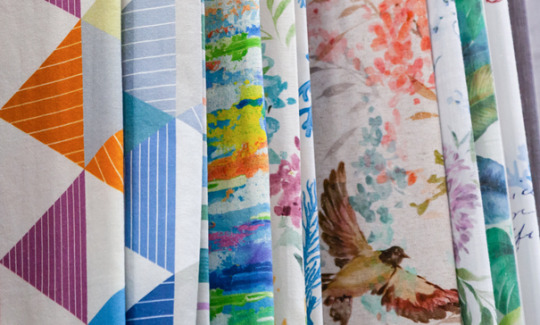
Initiatives are many, the textile industry is in a frenetic state
Polyester causes microplastics, and the natural fibre cotton also has environmental damage in its luggage. No wonder some manufacturers are looking for alternatives. But they can at best be part of the solution.
When someone buries his/her underpants in the garden, it's not necessarily a sign of outlandish or disturbing preferences. It can also be just a slightly more entertaining test of soil quality, which the University of Zurich has even used scientifically. However, most of our clothes would probably emerge from the earth relatively unchanged after a few months, even if the soil in question contains enough beneficial organisms. Because most of our clothes are not biodegradable in the environment - often not even those made of supposedly more sustainable fibres.
“First of all, you have to differentiate between natural fibres that grow on bushes, stalks or trees and are already in fibre form, and man-made fibres,” says Anett Matthäi, who works on sustainable textiles at the engineering faculty of the Hof University of Applied Sciences[1] in Bavaria.
Up until the turn of the 19th and 20th centuries, clothing was always made of natural fibres, cotton, linen, wool or silk. Then, at the beginning of the 20th century, the first synthetic fibre was commercially manufactured: wood became viscose. In 1940, nylon was the first completely synthetic fibre to appear on the market. In the 1950s, the first items of clothing made of polyester were found in stores. Today, polyester is by far the most common material for clothing, accounting for 52 percent of global fibre production[2].
Polyester, cotton and viscose are harmful to the environment
Polyester[3], nylon[4], and other man-made fibres like polyamide[5], acrylic[6], and elastane[7] have advantages—they're cheap, and they use relatively little water to make. But their starting material is the finite raw material petroleum. And they contribute to plastic and microplastic pollution when they enter the environment.
And they do that on a significant scale: clothing loses fibres, during manufacture, during wear and during washing; In Switzerland, 650 tons of microplastics from textiles end up in the environment every year. And in countries like Chile or Ghana[8], old clothes collected abroad rot in huge landfills; some of them are washed into the sea. They will not rot in the ground or in salt water. Instead, like other plastic waste, they break down into smaller and smaller particles over time.
The second most important fibre on the market does not have this problem: cotton[9] is a natural fibre and biodegradable. But growing them requires a lot of fertilizer, pesticides and water. An estimated 3,700 or 4,700 litres of water are needed to produce one pair of jeans.
And viscose[10], which is made from renewable raw materials, also has its pitfalls. The cellulose from the wood of beech or eucalyptus is dissolved and the resulting so-called dope is pressed through nozzles to create the fibre. "You can imagine the process as making spaghetti from dough," says Matthäi, "only much finer, and the 'spaghetti' doesn't tear as quickly."
In this process, however, large amounts of toxic carbon disulfide and caustic soda are sometimes used. The same applies to modal, which is also made from cellulose. Bamboo viscose has therefore also fallen into disrepute. At first it was considered particularly sustainable because of the fast and pesticide-free growing raw material.
The production of lyocell does not require any toxic chemicals
Because neither viscose nor polyester nor cotton are really sustainable, manufacturers are looking for alternative fibres. And so there are now clothes made of materials with names like Lyocell[11] or PLA[12], bamboo viscose or soy silk, pineapple leather or milk fibre.[13] A lot of it sounds like nature. But the raw material alone does not make a fibre sustainable.
Lyocell is considered to be comparatively environmentally friendly, and the label often includes the brand name Tencel. It is also a so-called regenerated fiber that is chemically synthesized from renewable raw materials. But unlike classic viscose, the solvent used in lyocell is not toxic.
And lyocell is – just like classic viscose – biodegradable, i.e. it is broken down by microorganisms into CO2, water and minerals. A recently published study showed that this not only works in the garden, but also in the sea.
"Compostable" does not mean "biodegradable"
Scientists hung samples of different textiles in the sea for more than a year. The cotton samples then dissolved – no surprise, even from the cotton underpants buried in the garden only the seams and the elastic band are left after two months if the soil is healthy. The lyocell had also disappeared after months in the sea.
The sample made of PLA, a bioplastic that is also processed into textiles, was almost unchanged. PLA is the abbreviation of Polylactic Acid. It is made from fermented starch from sugar beets or corn, advertised as particularly sustainable and is officially compostable. But that does not mean that it is degraded in the environment.
Because in order to be able to call itself "compostable", the material only has to decompose within three months in an industrial composting plant. In this, however, there are completely different conditions of temperature, humidity and oxygen supply than in the garden - and even more so than in the sea.
“You cannot draw any direct conclusions from results on the compostability of a material as to whether it can also be decomposed by microorganisms in a different environment,” says Matthäi. "The conditions and the composition of the microorganisms are completely different." The study shows that bioplastics also contribute to the littering of the oceans with plastic.[14]
Soy silk, milk fibre and pineapple leather: new fibres have their pitfalls
It might be different with soy silk.[15] According to Matthäi, it is in principle biodegradable, but like viscose, manufacturing processes and chemical additives could impair its degradability. The material is often featured in reports on sustainable clothing, but only a few raw fabrics and yarns are available to knit yourself. According to the information provided, they are made from waste from tofu production in a closed cycle.
While soy silk[16] does not seem to play a role on the market so far, an Austrian underwear manufacturer has released the first models with another new material this spring: milk fibre[17]. It should be very comfortable to wear. How good it is for the environment depends on whether only dairy waste that is no longer suitable for consumption is processed. And it depends on which additives are needed to spin a fibre from the milk protein. However, the underwear manufacturer does not provide this information – and does not provide it later on request either.
Pineapple leather[18] is just one particularly exotic-sounding example of a non-animal and therefore supposedly sustainable alternative to leather. Other manufacturers use cork, mushrooms[19], apples[20], coffee, grapes, cacti or bananas as raw materials. But the naturalness usually doesn't go any further than that. Plastic is always involved, as a carrier material, adhesive or coating, and then often polyurethane[21].
Not all fibres can be recycled
The same applies to all fibres: even if a material is sustainable and biodegradable in itself, this is by no means necessarily the case with the finished garment. "A chemical change caused by dyeing or functionalisation - for example to make the clothing easy to iron or water-repellent - can impair biodegradability," says Matthäi. A small percentage of elastane, which many cotton dresses have, also has this effect.
And recyclability also suffers as a result. Pure natural fibres can be shredded mechanically, and the resulting shorter fibres can be spun again. This is often not possible with synthetics; recycled polyester is not made from reused clothing, but from PET bottles.
It's certainly better than oil, but – contrary to what the advertising suggests – it shouldn't be seen as a solution to the packaging waste problem. All the more so since PET is particularly easy to recycle and should serve better as a raw material for a new bottle than for a fleece jacket.
For Anett Matthäi, all these fibres alone cannot be the solution anyway. There is probably not enough cultivable land to produce the quantities of clothing currently made from polyester with clothing made from fibres from renewable raw materials. "In my opinion, the most important thing is that the consumption of materials is reduced overall," she sums up. Then, she believes, it would also be possible to produce enough materials from renewable raw materials or by recycling waste.
So before you bury your underpants in the garden, you should ask yourself whether you could still wear them for a while.
Source
Esther Widmann, Lyocell, Milchfaser und Ananasleder: Neue Textilfasern werben mit Nachhaltigkeit. Ihre Versprechen halten können die wenigsten, in Neue Zürcher Zeitung, 29-08-2023, https://www.nzz.ch/wissenschaftnachhaltige-textilfasern-wie-gut-sind-lyocell-co-wirklich-ld.1745536
[1] Hof University, German: Hochschule Hof, full name Hochschule für Angewandte Wissenschaften Hof, is a public non-profit business, media and technical vocational university founded in 1994 in Upper Franconia, Bavaria, Germany.
[2] Read also: https://www.tumblr.com/earaercircular/725160672165543936/scientists-develop-simple-way-to-recycle-polyester?source=share
[3] Polyester is a category of polymers that contain the ester functional group in every repeat unit of their main chain. As a specific material, it most commonly refers to a type called polyethylene terephthalate (PET). Polyesters include naturally occurring chemicals, such as in plants and insects, as well as synthetics such as polybutyrate. Natural polyesters and a few synthetic ones are biodegradable, but most synthetic polyesters are not. Synthetic polyesters are used extensively in clothing.
[4] Nylon is a generic designation for a family of synthetic polymers composed of polyamides (repeating units linked by amide links). Nylon is a silk-like thermoplastic, generally made from petroleum, that can be melt-processed into fibers, films, or shapes]: 2 Nylon polymers can be mixed with a wide variety of additives to achieve many property variations. Nylon polymers have found significant commercial applications in fabric and fibers (apparel, flooring and rubber reinforcement), in shapes (molded parts for cars, electrical equipment, etc.), and in films (mostly for food packaging)
[5] A polyamide is a polymer with repeating units linked by amide bonds. Polyamides occur both naturally and artificially. Examples of naturally occurring polyamides are proteins, such as wool and silk. Artificially made polyamides can be made through step-growth polymerization or solid-phase synthesis yielding materials such as nylons, aramids, and sodium polyaspartate. Synthetic polyamides are commonly used in textiles, automotive industry, carpets, kitchen utensils and sportswear due to their high durability and strength. The transportation manufacturing industry is the major consumer, accounting for 35% of polyamide (PA) consumption
[6] Acrylic fabric is made with plastic threads. The plastic threads are made of a manmade polymer fiber created from fossil fuels through a chemical process. Acrylic fabric is made in a way similar to the production of polyamide fabric (or nylon fabric) and polyester fabric.
[7] Spandex, Lycra, or elastane is a synthetic fibre known for its exceptional elasticity. It is a polyether-polyurea copolymer that was invented in 1958 by chemist Joseph Shivers at DuPont.
[8] Read also: https://www.tumblr.com/earaercircular/720260226679488512/hms-answer-about-the-dumped-clothes-article?source=share
[9] Read also https://www.tumblr.com/earaercircular/715379082096951296/the-type-of-cotton-matters-betting-on-more?source=share
[10] Rayon is a semi-synthetic fiber, made from natural sources of regenerated cellulose, such as wood and related agricultural products. It has the same molecular structure as cellulose. It is also called viscose. Many types and grades of viscose fibers and films exist. Some imitate the feel and texture of natural fibers such as silk, wool, cotton, and linen. The types that resemble silk are often called artificial silk.
[11] Lyocell is a semi-synthetic fiber used to make textiles for clothing and other purposes. It is a form of regenerated cellulose made by dissolving pulp and dry jet-wet spinning. Unlike rayon made by some of the more common viscose processes, Lyocell production does not use carbon disulfide, which is toxic to workers and the environment. Lyocell was originally trademarked as Tencel in 1982.
[12] Polylactic acid, also known as polylactic acid or polylactide (PLA), is a thermoplastic polyester.
[13] Read also: https://www.tumblr.com/earaercircular/721296904220196864/joline-jolink-makes-biodegradable-fashion?source=share
[14] Read also: https://www.tumblr.com/earaercircular/656486012918333440/fashion-brands-are-diving-into-ocean-plastic-but?source=share
[15] With the softness of silk, soy fabric or “vegetable cashmere” is one of the world’s most eco-friendly fabrics. Produced using soy protein derived from the hulls of soybeans, this intriguing textile takes a waste product and transforms it into a usable textile with minimal use of toxic chemicals and limited processing. Soy fabric has excellent drape, and it is highly elastic. While this textile dyes well, colors sometimes bleed during the first few washings. Though reasonably prone to pilling, soy fabric does not wrinkle, and it doesn’t shrink. https://sewport.com/fabrics-directory/soy-fabric
[16] Soy silk has similar properties to animal silk: it has a smooth, soft structure, a shimmering shine, it is temperature regulating has high moisture absorption. Unlike conventional silk, it hardly creases and is completely biodegradable… https://www.glore.de/Materiallexikon/Sojaseide/
[17] Milk protein fibers are synthetic fibers made from the milk protein casein. In 2011, the new fiber made headlines as a particularly ecological alternative to cotton. Casein fibers have been known since the 1930s. Designer Anke Domaske developed the new milk fiber Qmilk together with the Fiber Institute Bremen. For the production, casein powder is heated together with other natural ingredients and drawn into threads through a nozzle. Only 2 liters of water are needed to produce 1 kg of milk fibre. On the other hand, in the production of cotton textiles, 10,000-25,000 liters are used for 1 kg of fabric. Every year in Germany alone, 1.9 million tons of milk have to be disposed of because it is no longer suitable for consumption. It still contains valuable ingredients and offers great potential for technical purposes. https://www.glore.de/Materiallexikon/Milchfaser/
[18] Piñatex is a non-biodegradable leather alternative made from cellulose fibres extracted from pineapple leaves, PLA (polylactic acid), and petroleum-based resin. Piñatex was developed by Dr Carmen Hijosa and first presented at the PhD graduate exhibition at the Royal College of Art, London. Piñatex is manufactured and distributed by Hijosa's company Ananas Anam Ltd.
[19] Read also: https://www.tumblr.com/earaercircular/667314088734507008/mushrooms-as-raw-material-for-leather-accessories?source=share
[20] Read alsop: https://www.tumblr.com/earaercircular/677442405046321152/we-make-a-sneaker-out-of-apples?source=share
[21] Polyurethane refers to a class of polymers composed of organic units joined by carbamate (urethane) links. In contrast to other common polymers such as polyethylene and polystyrene, polyurethane is produced from a wide range of starting materials. This chemical variety produces polyurethanes with different chemical structures leading to many different applications. These include rigid and flexible foams, and coatings, adhesives, electrical potting compounds, and fibres such as spandex and polyurethane laminate (PUL). Foams are the largest application accounting for 67% of all polyurethane produced in 2016.
2 notes
·
View notes
Text
The Ultimate Guide to Choosing the Right Bra and Panties for Everyday Comfort
Finding the right underwear isn't just about style—it's about feeling confident, supported, and comfortable every day. With so many options in the market, choosing the best fit can feel overwhelming. Whether you’re shopping for daily wear or something special, knowing what to look for in comfortable bras and womens panties can make all the difference.
In this guide, we’ll break down everything you need to know to find the right support, coverage, and comfort for your body and lifestyle.
Why Comfortable Undergarments Matter
Your undergarments are the first layer of clothing you wear—and arguably the most important. The right womens panties and comfortable bras should feel like a second skin: soft, breathable, and non-restrictive.
Ill-fitting undergarments can lead to discomfort, skin irritation, and even posture problems over time. Investing in the right underwear means investing in your everyday well-being.
Exploring Different Bra Types
Let’s take a look at some of the most essential types of bras available today, and how they cater to different needs.
1. Full Coverage Bras
A full coverage bra for women provides maximum support while covering the entire breast. This type of bra is ideal for everyday wear, especially for those with a fuller bust. A women’s full coverage bra minimizes spillage and ensures you feel supported throughout the day. If you're looking for the full coverage best bra for women, choose one with wide straps and breathable fabric for added comfort.
2. Front Open Bras
Struggling with back clasps? A front open bra is a great solution. These bras are easy to wear and remove, especially for women with mobility issues or those seeking convenience. Whether you prefer a front open cotton bra for breathability or a more structured front open bra cotton design for added support, this style blends function with comfort.
3. Sports Bras for Active Lifestyles
For those who lead an active lifestyle, sports bras online offer the support you need during workouts. From strapless sports bras that stay in place to thin strap sports bras for a lightweight feel, there's a sports bra for every activity level.
Whether you're looking for women’s sports bras for the gym or a jog, choose designs that reduce bounce and are made from moisture-wicking materials to keep you dry and comfortable.
4. Padded Bras for Shape and Support
Padded bras for girls and women offer shape and smoothness under clothing. If you prefer extra lift or modesty, fully padded bras are a great pick. Look for padded bras with soft foam cups and breathable linings that don’t trap heat, so you can wear them all day without discomfort.
5. Bridal Bras for Special Occasions
On your big day, you need lingerie that’s both elegant and supportive. A Bridal Bra should blend seamlessly under your dress while providing all-day comfort. Whether you're wearing a traditional lehenga or a western gown, the right bridal indian bra will ensure you look and feel your best.
Choosing the Right Panties for Your Body
Just like bras, panties should be chosen based on comfort, fit, and functionality. Here’s what to keep in mind when shopping for women's panties online:
1. Fabric is Key
Cotton is a go-to for many women because it’s breathable and hypoallergenic. However, modal and microfiber options can offer a more seamless finish under tight clothing.
2. Know Your Styles
There’s no one-size-fits-all when it comes to panties. From bikini cuts to high-waisted styles, the best womens panties are the ones that align with your comfort and daily outfit choices.
When shopping for women panties, opt for stretchable fabrics and elastic waistbands that don’t dig into the skin. Look for panties that stay in place without riding up or bunching.
3. Shop Smart Online
Buying womens panties online has become easier with detailed size guides and customer reviews. Stick to trusted platforms like Bodysize that offer a range of sizes, styles, and user-friendly return policies.
Tips for the Best Fit
Measure yourself regularly: Body changes due to weight fluctuations, pregnancy, or age. Measure your bust and band size every 6-12 months.
Try before you commit: If possible, test how the bra fits after a few hours of wear to ensure long-term comfort.
Mix and match styles: Your bra and panty drawer should include a mix of types for different outfits and occasions.
Final Thoughts
Wearing the right undergarments can have a surprisingly positive impact on your daily comfort and confidence. From full coverage bras for everyday support to breathable women panties that keep you feeling fresh, the right fit truly makes a difference. Whether you’re shopping for a bridal bra for your big day or browsing sports bras online for your next workout, always prioritize comfort and fit over trends. And remember: confidence starts from within—and that includes what you wear underneath.
0 notes
Text
1*1 Knitted Modal Spandex Stretch Elastic Rib Fabric for Clothing Click to quickly check key information of this product, and we recommend this for you: https://dexingknitting.en.made-in-china.com/product/GRfrONtYqpVg/China-1-1-Knitted-Modal-Spandex-Stretch-Elastic-Rib-Fabric-for-Clothing.html?utm_source=facebook&utm_medium=free&utm_campaign=featuredproduct_share&utm_content=lvktTyuAXWcS_00
0 notes
Photo

Sleepwear and loungewear might seem like two sides of the same coin. After all, both are built for comfort, often come in soft fabrics and are staples in any relaxed wardrobe. But if you've ever wondered whether your pyjama set can double up for errands or if your lounge co-ords are okay for bedtime—you’re not alone. Many people use these terms interchangeably, but they actually serve different purposes. In this blog, we’re breaking down the real difference between sleepwear and loungewear—so you can make smart, stylish and super comfy choices based on your day (or night). What Is Sleepwear? Sleepwear, as the name suggests, is clothing specifically designed for bedtime. It’s what you wear when your main goal is to relax, unwind and get a good night’s rest. The focus here is comfort—without compromising on functionality. Sleepwear is typically made from lightweight, breathable fabrics like cotton, modal or viscose. These materials allow your skin to breathe and help regulate your body temperature as you sleep. Types of Sleepwear 1. Pyjama Sets (Short or Full-Length) Comfortable and versatile, pyjama sets are perfect for a cosy night’s sleep. They come in short or full-length styles depending on the season and personal preference. 2. Nightgowns Nightgowns are flowy, feminine sleepwear options made from soft, breathable fabrics. They offer great ease of movement and are ideal for warm nights. 3. Camisole and Shorts Sets This breezy combo is great for those who like to sleep light. It combines style and comfort, making it a popular choice for summer nights. 4. Sleepshirts Oversized and relaxed, sleepshirts resemble long tees or button-downs. They’re easy to slip into and offer a laid-back, casual vibe for bedtime. The fits are usually loose or flowy, offering minimal restriction for movement. Many sleepwear styles also avoid zips, tight elastics or anything that might feel uncomfortable while lying down. The priority is always uninterrupted comfort. While women’s nightwear can be stylish and elegant, its main purpose is to ensure a restful night’s sleep. Now that we’ve covered what makes sleepwear unique, let’s shift gears and look at how loungewear compares. What is Loungewear? While sleepwear is all about resting, loungewear is designed for relaxation with flexibility—the kind you wear when you're not quite ‘out and about’ but not in bed either. Loungewear is often your go-to when you're working from home, watching a movie, cooking dinner or even stepping out for a quick errand. It strikes a balance between cosy and presentable, blending comfort with casual style. Types of Loungewear 1. Co-ord Sets Matching top and bottom sets that look effortlessly put-together while offering maximum comfort. Ideal for relaxing at home or stepping out in style. 2. Joggers and Hoodies Perfect for chilly days, this combo keeps you warm and cosy. Great for lounging, quick errands or travel comfort. 3. Oversized T-shirts and Leggings A go-to for relaxed days—soft, stretchable leggings paired with breezy oversized tees offer ease and flexibility. 4. Lounge Dresses or Kaftans Flowy, breathable and elegant—lounge dresses and kaftans combine comfort with a touch of sophistication. 5. Wraps and Robes Ideal for layering, especially in the mornings or after a shower. They offer coverage without compromising on cosiness. The fabric here tends to be slightly heavier or structured compared to sleepwear. You’ll find blends like fleece, ribbed cotton, jersey and even modal mixes. These materials hold shape better, perfect for moving around or layering. The best part? Loungewear sets for women are now designed to be so chic, they often pass as daywear. You can pair them with sneakers, sling a tote bag and head out comfortably. So, how do these two differ when put side by side? Let’s break it down clearly. Sleepwear vs Loungewear Feature Sleepwear Loungewear Purpose For sleep and rest For relaxing or casual daytime wear Fabric Type Lightweight, breathable (cotton/modal) Slightly thicker, stretchable (jersey/fleece) Fit & Style Loose, minimal hardware More tailored, often styled with details Common Pieces Pyjamas, nightgowns, camisole sets Joggers, hoodies, lounge dresses, robes Versatility Mainly worn indoors for sleep Worn at home, for errands and casual outings Can They Be Interchangeable? It’s something we’ve all wondered at some point: “Can I wear this to bed?” Or maybe, “This pyjama top looks nice—can I pop out in it?” These days, the line between sleepwear and loungewear is getting softer—and that’s not a bad thing! Comfort is now just as important during the day as it is at night. Some nightwear pieces, like soft cami tops or relaxed-fit pyjamas, can work just fine for lounging at home. In the same way, comfy loungewear like joggers or oversized tees can be cosy enough to sleep in. That said, sleepwear is mainly designed for bedtime. It’s usually lighter, softer and helps you stay cool through the night. Loungewear is more about an easy, casual style you can wear throughout the day, even for errands or working from home. The good news? Many sleep and lounge pieces today are designed to be versatile, so you can sleep, relax and unwind in the same outfit without compromising on comfort or style. It’s the perfect balance between function and ease, giving you the best of both worlds. How to Choose Between Sleepwear and Loungewear? Think about your intention. If you're settling down for the night, breathable, tag-free, loose-fitting sleepwear is ideal. But if you’re lounging around the house during the day or stepping out for a coffee, go for loungewear that’s comfy and stylish. The right choice also depends on the weather, activity level and personal style. For example: Hot summer night? Go for a sleeveless cotton nightie. Cold evening watching a movie? Pull on a fleece loungewear set. Loungewear & Sleepwear Care: Smart Laundry Tips Should Sleepwear and Loungewear Be Cute or Just Comfortable? When we think of sleepwear and loungewear, comfort is usually the first thing that comes to mind—and rightly so! But who says comfortable can’t be cute? After all, what we wear at home still plays a part in how we feel. A cheerful print or a pretty colour can brighten your mood, even on a lazy Sunday. Whether it’s a soft, cosy nightdress or a matching loungewear set that makes you feel a little more ‘you’, adding a touch of style can be just as important as comfort. So, yes—while comfort is key, feeling good in what you wear matters too. It’s all about finding that happy balance between softness and style. !function(f,b,e,v,n,t,s) if(f.fbq)return;n=f.fbq=function()n.callMethod? n.callMethod.apply(n,arguments):n.queue.push(arguments); if(!f._fbq)f._fbq=n;n.push=n;n.loaded=!0;n.version='2.0'; n.queue=[];t=b.createElement(e);t.async=!0; t.src=v;s=b.getElementsByTagName(e)[0]; s.parentNode.insertBefore(t,s)(window,document,'script', ' fbq('init', '977202498997632'); fbq('track', 'PageView'); Source link
0 notes
Photo
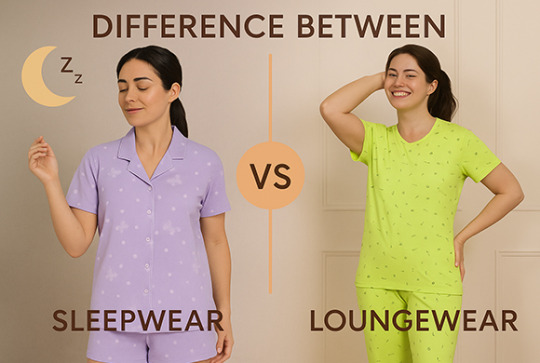
Sleepwear and loungewear might seem like two sides of the same coin. After all, both are built for comfort, often come in soft fabrics and are staples in any relaxed wardrobe. But if you've ever wondered whether your pyjama set can double up for errands or if your lounge co-ords are okay for bedtime—you’re not alone. Many people use these terms interchangeably, but they actually serve different purposes. In this blog, we’re breaking down the real difference between sleepwear and loungewear—so you can make smart, stylish and super comfy choices based on your day (or night). What Is Sleepwear? Sleepwear, as the name suggests, is clothing specifically designed for bedtime. It’s what you wear when your main goal is to relax, unwind and get a good night’s rest. The focus here is comfort—without compromising on functionality. Sleepwear is typically made from lightweight, breathable fabrics like cotton, modal or viscose. These materials allow your skin to breathe and help regulate your body temperature as you sleep. Types of Sleepwear 1. Pyjama Sets (Short or Full-Length) Comfortable and versatile, pyjama sets are perfect for a cosy night’s sleep. They come in short or full-length styles depending on the season and personal preference. 2. Nightgowns Nightgowns are flowy, feminine sleepwear options made from soft, breathable fabrics. They offer great ease of movement and are ideal for warm nights. 3. Camisole and Shorts Sets This breezy combo is great for those who like to sleep light. It combines style and comfort, making it a popular choice for summer nights. 4. Sleepshirts Oversized and relaxed, sleepshirts resemble long tees or button-downs. They’re easy to slip into and offer a laid-back, casual vibe for bedtime. The fits are usually loose or flowy, offering minimal restriction for movement. Many sleepwear styles also avoid zips, tight elastics or anything that might feel uncomfortable while lying down. The priority is always uninterrupted comfort. While women’s nightwear can be stylish and elegant, its main purpose is to ensure a restful night’s sleep. Now that we’ve covered what makes sleepwear unique, let’s shift gears and look at how loungewear compares. What is Loungewear? While sleepwear is all about resting, loungewear is designed for relaxation with flexibility—the kind you wear when you're not quite ‘out and about’ but not in bed either. Loungewear is often your go-to when you're working from home, watching a movie, cooking dinner or even stepping out for a quick errand. It strikes a balance between cosy and presentable, blending comfort with casual style. Types of Loungewear 1. Co-ord Sets Matching top and bottom sets that look effortlessly put-together while offering maximum comfort. Ideal for relaxing at home or stepping out in style. 2. Joggers and Hoodies Perfect for chilly days, this combo keeps you warm and cosy. Great for lounging, quick errands or travel comfort. 3. Oversized T-shirts and Leggings A go-to for relaxed days—soft, stretchable leggings paired with breezy oversized tees offer ease and flexibility. 4. Lounge Dresses or Kaftans Flowy, breathable and elegant—lounge dresses and kaftans combine comfort with a touch of sophistication. 5. Wraps and Robes Ideal for layering, especially in the mornings or after a shower. They offer coverage without compromising on cosiness. The fabric here tends to be slightly heavier or structured compared to sleepwear. You’ll find blends like fleece, ribbed cotton, jersey and even modal mixes. These materials hold shape better, perfect for moving around or layering. The best part? Loungewear sets for women are now designed to be so chic, they often pass as daywear. You can pair them with sneakers, sling a tote bag and head out comfortably. So, how do these two differ when put side by side? Let’s break it down clearly. Sleepwear vs Loungewear Feature Sleepwear Loungewear Purpose For sleep and rest For relaxing or casual daytime wear Fabric Type Lightweight, breathable (cotton/modal) Slightly thicker, stretchable (jersey/fleece) Fit & Style Loose, minimal hardware More tailored, often styled with details Common Pieces Pyjamas, nightgowns, camisole sets Joggers, hoodies, lounge dresses, robes Versatility Mainly worn indoors for sleep Worn at home, for errands and casual outings Can They Be Interchangeable? It’s something we’ve all wondered at some point: “Can I wear this to bed?” Or maybe, “This pyjama top looks nice—can I pop out in it?” These days, the line between sleepwear and loungewear is getting softer—and that’s not a bad thing! Comfort is now just as important during the day as it is at night. Some nightwear pieces, like soft cami tops or relaxed-fit pyjamas, can work just fine for lounging at home. In the same way, comfy loungewear like joggers or oversized tees can be cosy enough to sleep in. That said, sleepwear is mainly designed for bedtime. It’s usually lighter, softer and helps you stay cool through the night. Loungewear is more about an easy, casual style you can wear throughout the day, even for errands or working from home. The good news? Many sleep and lounge pieces today are designed to be versatile, so you can sleep, relax and unwind in the same outfit without compromising on comfort or style. It’s the perfect balance between function and ease, giving you the best of both worlds. How to Choose Between Sleepwear and Loungewear? Think about your intention. If you're settling down for the night, breathable, tag-free, loose-fitting sleepwear is ideal. But if you’re lounging around the house during the day or stepping out for a coffee, go for loungewear that’s comfy and stylish. The right choice also depends on the weather, activity level and personal style. For example: Hot summer night? Go for a sleeveless cotton nightie. Cold evening watching a movie? Pull on a fleece loungewear set. Loungewear & Sleepwear Care: Smart Laundry Tips Should Sleepwear and Loungewear Be Cute or Just Comfortable? When we think of sleepwear and loungewear, comfort is usually the first thing that comes to mind—and rightly so! But who says comfortable can’t be cute? After all, what we wear at home still plays a part in how we feel. A cheerful print or a pretty colour can brighten your mood, even on a lazy Sunday. Whether it’s a soft, cosy nightdress or a matching loungewear set that makes you feel a little more ‘you’, adding a touch of style can be just as important as comfort. So, yes—while comfort is key, feeling good in what you wear matters too. It’s all about finding that happy balance between softness and style. !function(f,b,e,v,n,t,s) if(f.fbq)return;n=f.fbq=function()n.callMethod? n.callMethod.apply(n,arguments):n.queue.push(arguments); if(!f._fbq)f._fbq=n;n.push=n;n.loaded=!0;n.version='2.0'; n.queue=[];t=b.createElement(e);t.async=!0; t.src=v;s=b.getElementsByTagName(e)[0]; s.parentNode.insertBefore(t,s)(window,document,'script', ' fbq('init', '977202498997632'); fbq('track', 'PageView'); Source link
0 notes
Text
Children's Suits & Ensembles Market Analysis Report - Industry Trends, Growth and Segmentation 2028
The global children’s suits and ensembles market was valued at USD 4,036.9 million in 2021 and is anticipated to reach a valuation of USD 4,918.9 million by 2028, expanding at a compound annual growth rate (CAGR) of 2.9% from 2022 to 2028. The market’s steady growth is attributed primarily to rising demand from the Asia Pacific region, driven by substantial population growth in countries such as India and China. The increasing number of children in these populous nations is generating strong consumption of children’s apparel, especially formal and semi-formal outfits like suits and ensembles.
Additionally, increasing penetration of global brands into emerging markets, coupled with rising per capita spending on children’s fashion, is significantly contributing to market expansion. Parents are increasingly willing to spend on quality and branded clothing for their children, particularly in urban and middle-class households.
One of the major factors boosting the industry is the influence of fast fashion, which has had a transformative impact on the global apparel industry. By making stylish and designer-inspired clothes affordable and accessible, fast fashion is reshaping consumer expectations in the children’s apparel space. This trend has allowed even luxury-inspired children's outfits, including suits and coordinated sets, to be offered at competitive prices, fueling greater market penetration.
Moreover, the retail sector’s rapid development, including the growth of both brick-and-mortar stores and online distribution platforms, has made children’s apparel more widely available than ever before. The expansion of retail formats and the presence of kid-focused sections within department stores, supermarkets, and specialty boutiques have improved product visibility. Similarly, the proliferation of e-commerce platforms, including those run by brands themselves, has enhanced global accessibility, enabling parents across geographies to shop with ease. Together, these developments are expected to have a positive impact on the global children’s suits & ensembles market throughout the forecast period.
Key Market Trends & Insights:
Europe led the global children’s suits and ensembles market in terms of revenue share, contributing over 30.0% in 2021. This dominance is attributed to the well-established nature of the children’s apparel industry in many European countries, where there is high consumer awareness, established brands, and a tradition of purchasing quality children’s clothing.
The Asia Pacific region is projected to register the highest CAGR of 3.7% from 2022 to 2028. This growth is largely driven by rapid population growth in countries like India and China, along with increasing urbanization, higher disposable incomes, and greater brand penetration in rural and semi-urban areas.
The offline segment accounted for the largest share of around 80.0% of global market revenue in 2021. Physical retail continues to dominate due to the tactile nature of children’s clothing purchases, where parents prefer to assess fabric, fit, and quality firsthand.
However, the online segment is expected to grow at the highest CAGR of 3.5% from 2022 to 2028, driven by the expansion of e-commerce giants, emergence of new online retailers, and the launch of brand-owned websites. Increasing digital penetration, convenience of home delivery, and greater promotional activity online are contributing to this segment's rapid growth.
In terms of material, polyester fiber dominated the market, holding over 40.0% of the global revenue share in 2021. Polyester is widely used due to its durability, ease of care, and affordability, making it ideal for children’s clothing.
The cellulosic fiber segment is anticipated to witness the highest CAGR of 3.8% during the forecast period. These fibers, including viscose and modal, are gaining popularity due to their biodegradable and eco-friendly properties, aligning with consumer demand for sustainable fashion.
The cotton segment is also expected to record steady growth with a CAGR of 3.2%, favored for its breathability and softness, particularly suitable for infants and toddlers.
The market was primarily dominated by the boys’ segment, which contributed over 55.0% of total revenue in 2020. Suits and coordinated clothing sets are traditionally more popular in boys’ fashion, especially for formal events and ceremonies.
The girls’ segment, however, is projected to grow at a CAGR of 3.1% from 2022 to 2028, driven by evolving fashion preferences, increased awareness, and a wider array of trendy options available in the market. Brands are increasingly focusing on modern, elegant suits and sets for girls as well, tapping into a growing niche.
Order a free sample PDF of the Children's Suits & Ensembles Market Intelligence Study, published by Grand View Research.
Market Size & Forecast:
2021 Market Size: USD 4,036.9 Million
2028 Projected Market Size: USD 4,918.9 Million
CAGR (2022-2028): 2.9%
Europe: Largest market in 2021
Key Companies & Market Share Insights:
Leading manufacturers in the children’s suits and ensembles market are actively focusing on product development and innovation to stay competitive. Efforts are directed toward creating safe, stylish, and comfortable garments using high-quality fabrics such as poly-blends and biodegradable cellulosic fibers. Optimization of the production process is also a key area of focus to improve efficiency and cost-effectiveness.
Moreover, strategic initiatives such as product launches, brand expansions, partnerships, joint ventures, and mergers & acquisitions are increasingly being adopted by companies to strengthen their market position. For example, as reported on April 19, 2022, the e-commerce brand COCO Village announced its entry into the children’s clothing segment with the launch of a gender-neutral collection, signaling the brand's alignment with modern consumer values and inclusivity in children’s fashion.
Key Players
Zara SA
Marks & Spencer Plc.
Hugo Boss
Calvin Klein
Giorgio Armani S.p.A.
Ralph Lauren Corp.
Moss Bros Group Plc.
Punto Fa, S.L.
Explore Horizon Databook – The world's most expansive market intelligence platform developed by Grand View Research.
Conclusion:
In conclusion, the global children’s suits & ensembles market is on a steady growth trajectory, supported by factors such as rising demand from populous regions, increasing per capita spending, fashion innovation, and the growth of e-commerce. As the market continues to evolve, companies that prioritize sustainability, innovation, and consumer-focused design are expected to thrive.
#Suits & Ensembles Market Size#Children's Suits & Ensembles Industry Trend#Children's Suits & Ensembles Market Research
0 notes
Text
Children's Suits & Ensembles Market 2028 Overview, Global Industry Size, Price, Future Analysis
The global children’s suits and ensembles market was valued at USD 4,036.9 million in 2021 and is anticipated to reach a valuation of USD 4,918.9 million by 2028, expanding at a compound annual growth rate (CAGR) of 2.9% from 2022 to 2028. The market’s steady growth is attributed primarily to rising demand from the Asia Pacific region, driven by substantial population growth in countries such as India and China. The increasing number of children in these populous nations is generating strong consumption of children’s apparel, especially formal and semi-formal outfits like suits and ensembles.
Additionally, increasing penetration of global brands into emerging markets, coupled with rising per capita spending on children’s fashion, is significantly contributing to market expansion. Parents are increasingly willing to spend on quality and branded clothing for their children, particularly in urban and middle-class households.
One of the major factors boosting the industry is the influence of fast fashion, which has had a transformative impact on the global apparel industry. By making stylish and designer-inspired clothes affordable and accessible, fast fashion is reshaping consumer expectations in the children’s apparel space. This trend has allowed even luxury-inspired children's outfits, including suits and coordinated sets, to be offered at competitive prices, fueling greater market penetration.
Moreover, the retail sector’s rapid development, including the growth of both brick-and-mortar stores and online distribution platforms, has made children’s apparel more widely available than ever before. The expansion of retail formats and the presence of kid-focused sections within department stores, supermarkets, and specialty boutiques have improved product visibility. Similarly, the proliferation of e-commerce platforms, including those run by brands themselves, has enhanced global accessibility, enabling parents across geographies to shop with ease. Together, these developments are expected to have a positive impact on the global children’s suits & ensembles market throughout the forecast period.
Key Market Trends & Insights:
Europe led the global children’s suits and ensembles market in terms of revenue share, contributing over 30.0% in 2021. This dominance is attributed to the well-established nature of the children’s apparel industry in many European countries, where there is high consumer awareness, established brands, and a tradition of purchasing quality children’s clothing.
The Asia Pacific region is projected to register the highest CAGR of 3.7% from 2022 to 2028. This growth is largely driven by rapid population growth in countries like India and China, along with increasing urbanization, higher disposable incomes, and greater brand penetration in rural and semi-urban areas.
The offline segment accounted for the largest share of around 80.0% of global market revenue in 2021. Physical retail continues to dominate due to the tactile nature of children’s clothing purchases, where parents prefer to assess fabric, fit, and quality firsthand.
However, the online segment is expected to grow at the highest CAGR of 3.5% from 2022 to 2028, driven by the expansion of e-commerce giants, emergence of new online retailers, and the launch of brand-owned websites. Increasing digital penetration, convenience of home delivery, and greater promotional activity online are contributing to this segment's rapid growth.
In terms of material, polyester fiber dominated the market, holding over 40.0% of the global revenue share in 2021. Polyester is widely used due to its durability, ease of care, and affordability, making it ideal for children’s clothing.
The cellulosic fiber segment is anticipated to witness the highest CAGR of 3.8% during the forecast period. These fibers, including viscose and modal, are gaining popularity due to their biodegradable and eco-friendly properties, aligning with consumer demand for sustainable fashion.
The cotton segment is also expected to record steady growth with a CAGR of 3.2%, favored for its breathability and softness, particularly suitable for infants and toddlers.
The market was primarily dominated by the boys’ segment, which contributed over 55.0% of total revenue in 2020. Suits and coordinated clothing sets are traditionally more popular in boys’ fashion, especially for formal events and ceremonies.
The girls’ segment, however, is projected to grow at a CAGR of 3.1% from 2022 to 2028, driven by evolving fashion preferences, increased awareness, and a wider array of trendy options available in the market. Brands are increasingly focusing on modern, elegant suits and sets for girls as well, tapping into a growing niche.
Order a free sample PDF of the Children's Suits & Ensembles Market Intelligence Study, published by Grand View Research.
Market Size & Forecast:
2021 Market Size: USD 4,036.9 Million
2028 Projected Market Size: USD 4,918.9 Million
CAGR (2022-2028): 2.9%
Europe: Largest market in 2021
Key Companies & Market Share Insights:
Leading manufacturers in the children’s suits and ensembles market are actively focusing on product development and innovation to stay competitive. Efforts are directed toward creating safe, stylish, and comfortable garments using high-quality fabrics such as poly-blends and biodegradable cellulosic fibers. Optimization of the production process is also a key area of focus to improve efficiency and cost-effectiveness.
Moreover, strategic initiatives such as product launches, brand expansions, partnerships, joint ventures, and mergers & acquisitions are increasingly being adopted by companies to strengthen their market position. For example, as reported on April 19, 2022, the e-commerce brand COCO Village announced its entry into the children’s clothing segment with the launch of a gender-neutral collection, signaling the brand's alignment with modern consumer values and inclusivity in children’s fashion.
Key Players
Zara SA
Marks & Spencer Plc.
Hugo Boss
Calvin Klein
Giorgio Armani S.p.A.
Ralph Lauren Corp.
Moss Bros Group Plc.
Punto Fa, S.L.
Explore Horizon Databook – The world's most expansive market intelligence platform developed by Grand View Research.
Conclusion:
In conclusion, the global children’s suits & ensembles market is on a steady growth trajectory, supported by factors such as rising demand from populous regions, increasing per capita spending, fashion innovation, and the growth of e-commerce. As the market continues to evolve, companies that prioritize sustainability, innovation, and consumer-focused design are expected to thrive.
#Suits & Ensembles Market Size#Children's Suits & Ensembles Industry Trend#Children's Suits & Ensembles Market Research
0 notes
Text
How Do Padded Camisoles for Women Provide Shape and Support?

Introduction:
A padded camisole for women offers more than just coverage—it gently lifts, smooths, and supports the bust while keeping you comfortable all day. If you’re wondering how a camisole manages to shape your silhouette without underwires or hooks, this blog explains the design secrets that make it possible. You’ll also learn what features to look for in a camisole bra to match your support needs and outfit goal
A padded camisole for women may look simple, but it’s one of the most versatile and confidence-boosting pieces in your wardrobe. Beyond comfort, it offers support, shape, and styling ease—all without the stiffness of underwire bras or the layers of traditional innerwear.
So how exactly does a camisole manage to lift, hold, and flatter your shape while feeling this soft? Let’s break it down.
What Is a Padded Camisole and How Is It Constructed?
At first glance, a padded camisole looks like a regular tank top—but it does much more under the surface.
Built-in Padding for Shape and Modesty
Padded camisoles include cups sewn into the bust area or removable pads inserted into hidden pockets. These pads shape your bust, add volume if desired, and help prevent show-through under tight or light-colored clothes.
They create a more rounded, lifted silhouette while keeping the look natural—not overly structured.
Seamless, Stretchable Body Fit
Most camisole tops are made with soft fabrics like cotton-modal or cotton-spandex blends. These materials stretch and recover with your movements, hugging the body gently and smoothing out lines without feeling tight.
How Does a Padded Camisole Offer Support Without a Bra?
It’s all in the design. A well-made cami bra padded doesn’t rely on wires—it relies on thoughtful structure.
Elastic Bands and Contour Stitching
Some padded camisoles include an inner elastic band below the bust, acting like a soft underband to keep the padding in place. Others use stitching or paneling to contour the chest area, helping to hold the bust gently and securely in position.
This makes sure the shape you get in the morning stays consistent throughout the day.
Compression from Fabric Blends
Stretchy fabrics like spandex or elastane give a slight compression effect. This helps lift the bust slightly and keeps the camisole in place. The result is subtle support without the rigid feel of a traditional bra.
Benefits of Shaping and Support in Camisole Tops
Why does this matter beyond just looks? Because comfort, confidence, and convenience all go hand in hand.
Creates a Smooth Silhouette Under Clothes
A padded camisole eliminates the need for a separate bra and layering tank. It provides a clean, single layer that won’t show straps, seams, or padding outlines under shirts, dresses, or blouses.
It’s perfect for fitted outfits, sheer fabrics, or clothes with lower necklines.
Enhances Comfort in Everyday Wear
When your innerwear works with your body—not against it—you feel more relaxed. Shaping from the camisole improves posture, reduces bouncing, and prevents chafing or pinching common with ill-fitting bras.
It also simplifies getting dressed—no need to think about matching your bra and top.
Choosing the Right Padded Camisole for Your Body Type
The right padded camisole for women depends on your shape, bust size, and comfort preferences.
For Smaller or Medium Busts
Choose lightly padded camisoles with soft cups. These enhance your natural shape without feeling bulky. Look for camisoles with narrow or adjustable straps and breathable fabric blends that keep things light and flattering.
If you want to add subtle volume or feel more confident in sheer tops, this is a great everyday solution.
For Larger Busts
Go for camisoles with wider straps, double-layer fabrics, and structured padding. Look for versions with hidden underbands or shaping zones to provide better lift and security.
Camisoles can still work beautifully for larger busts—just make sure to select ones built with extra support in mind.
Style Tips: How to Wear a Cami Bra Padded for Shape and Style
Beyond innerwear, camisole tops can become a part of your look.
Under Layered Outfits or Fitted Tops
Camisoles create a seamless base under jackets, button-downs, or dresses. They smooth the bust area, hide visible bra lines, and offer enough coverage for modesty in deep necklines.
Choose neutral shades for versatility, or opt for darker tones if layering under sheer or flowy fabrics.
As Standalone Tops in Casual Looks
In warmer weather, padded camisoles double as cute, fuss-free tops. Pair them with denim shorts, joggers, or skirts for a casual outing. The built-in pads mean you can go bra-free without sacrificing shape or support.
They’re also perfect for lounging or working from home—easy to wear and easy to love.
Conclusion
So, how do padded camisoles for women provide shape and support? It’s a smart mix of soft padding, contouring fabrics, and comfortable design. Whether you’re dressing up for the office or winding down at home, a well-fitting camisole lifts, smooths, and supports—without wires, hooks, or discomfort.
Tried one yet? Let us know what worked for you in the comments! Or share your favorite way to style a camisole—your tips could help someone else make the perfect pick.
#Padded Camisole for Women#Camisole#Padded Camisole Bra#Camisole Tops#Cami Bra Padded#Camisole Bra#Camisole For Girls
0 notes